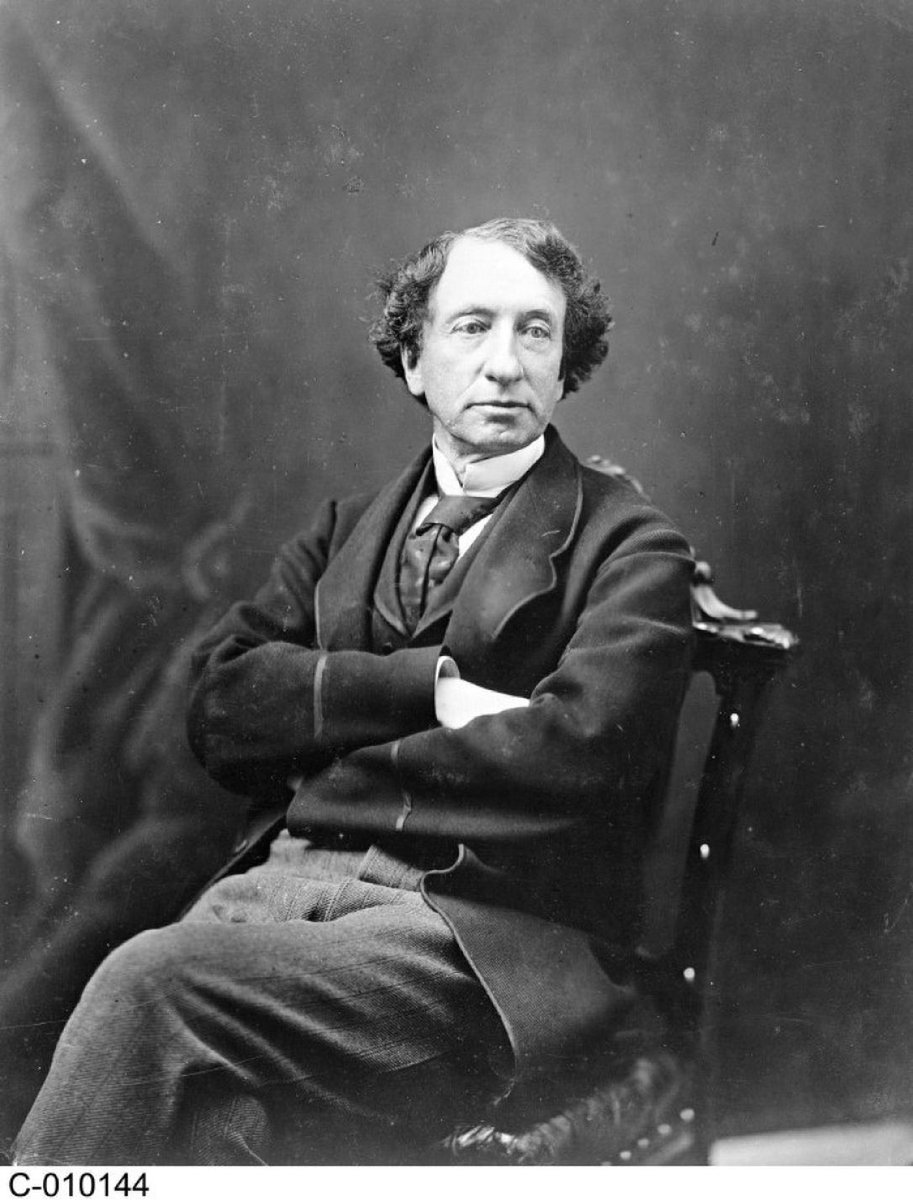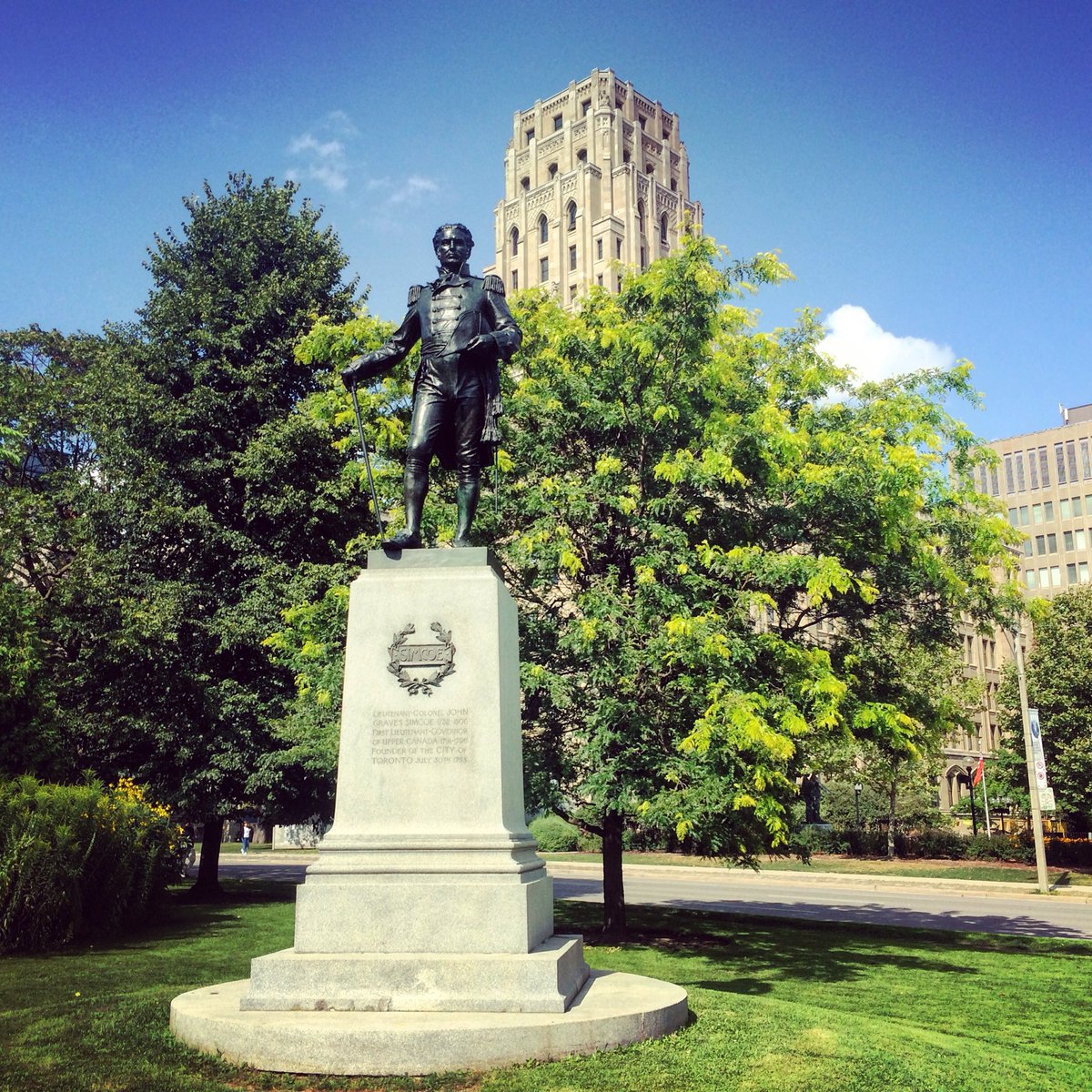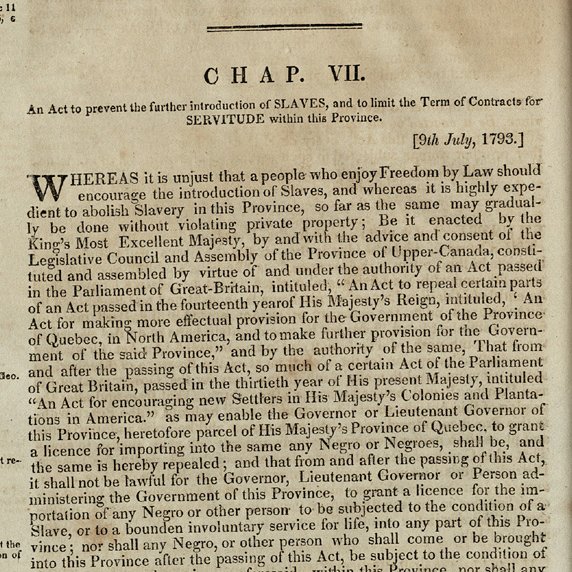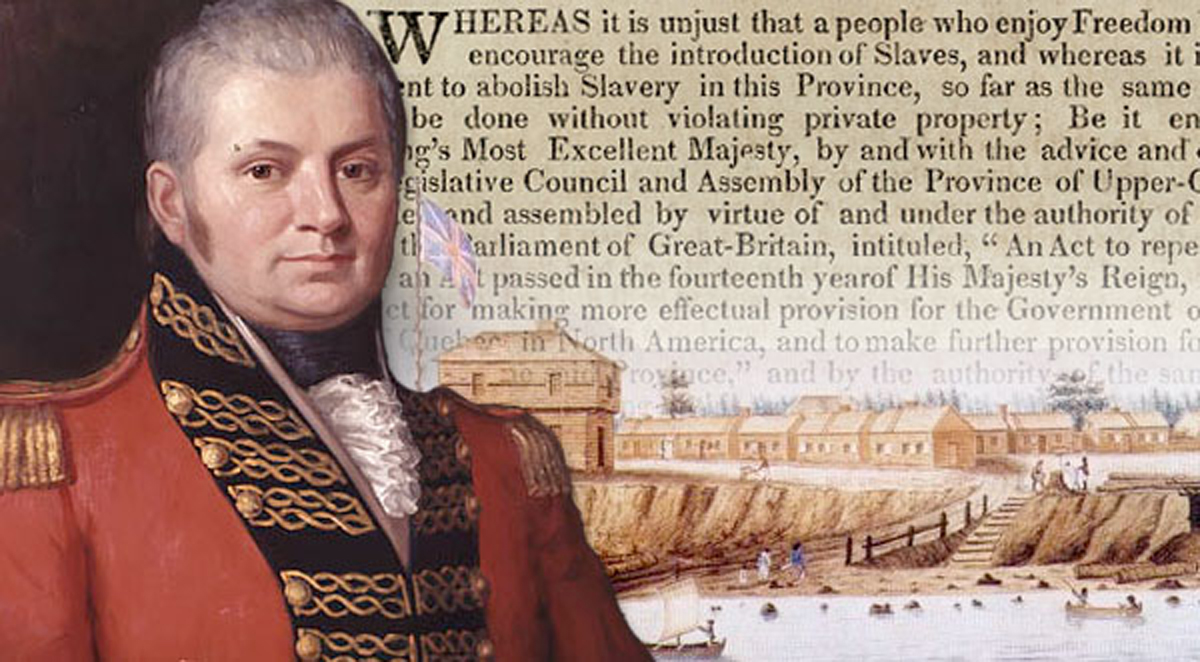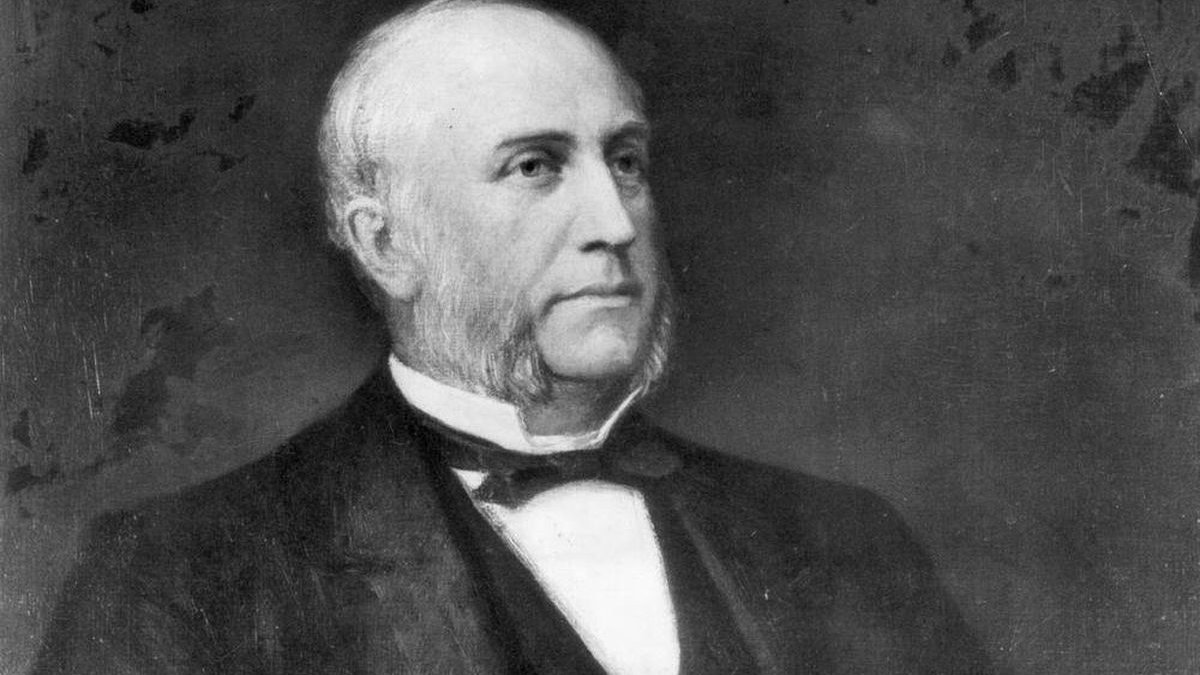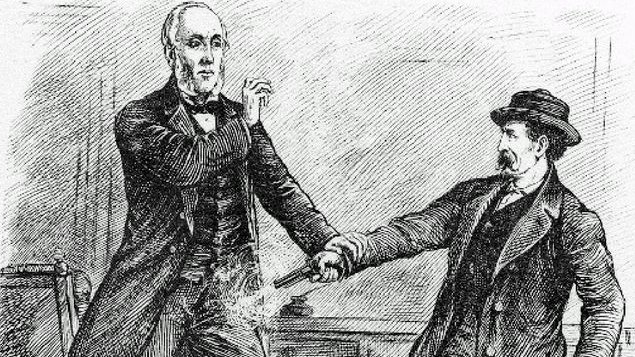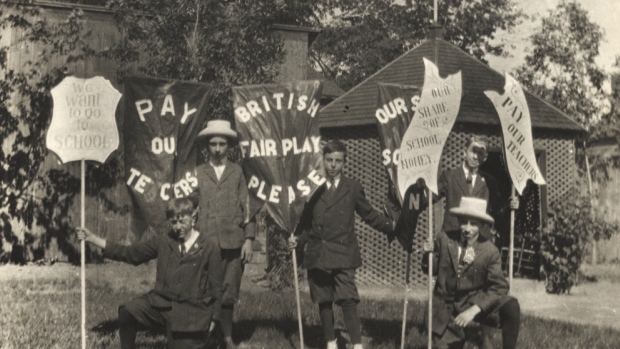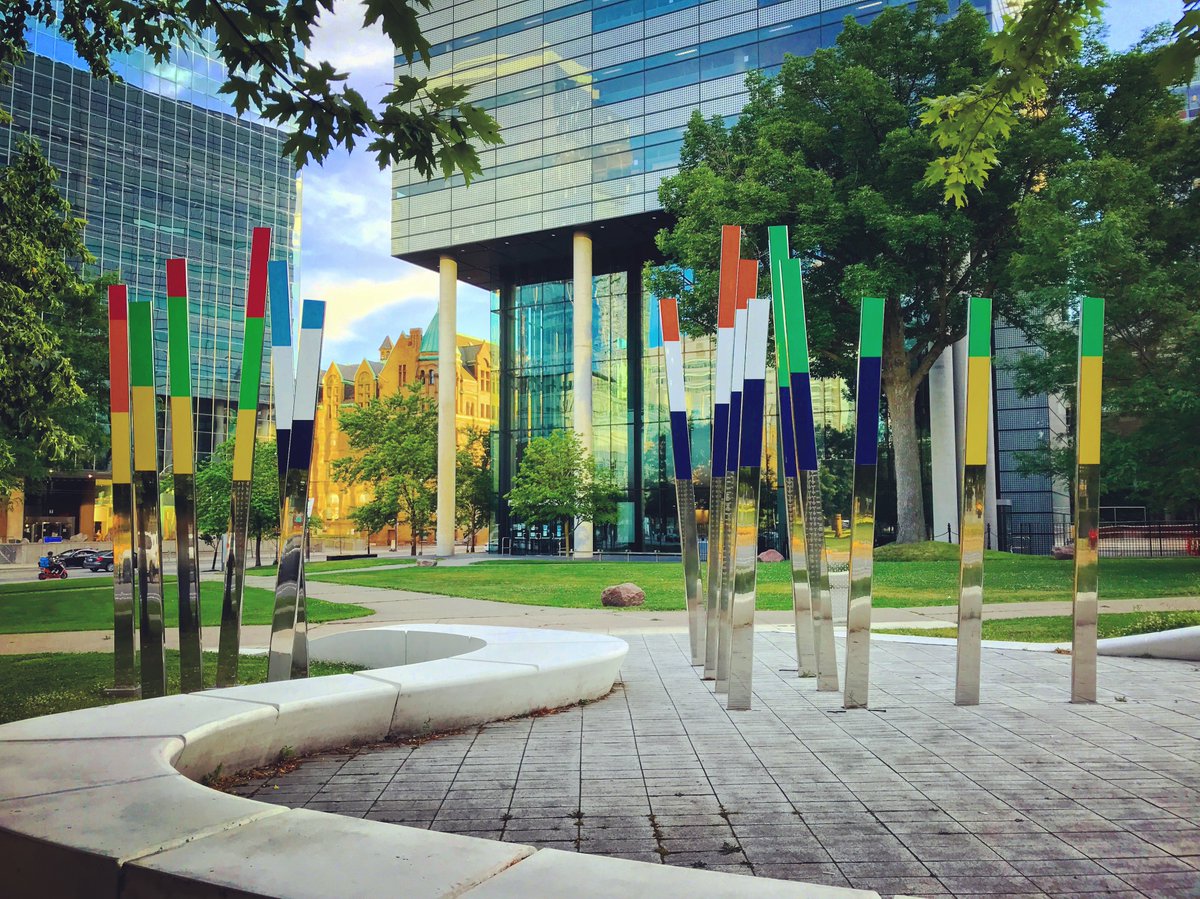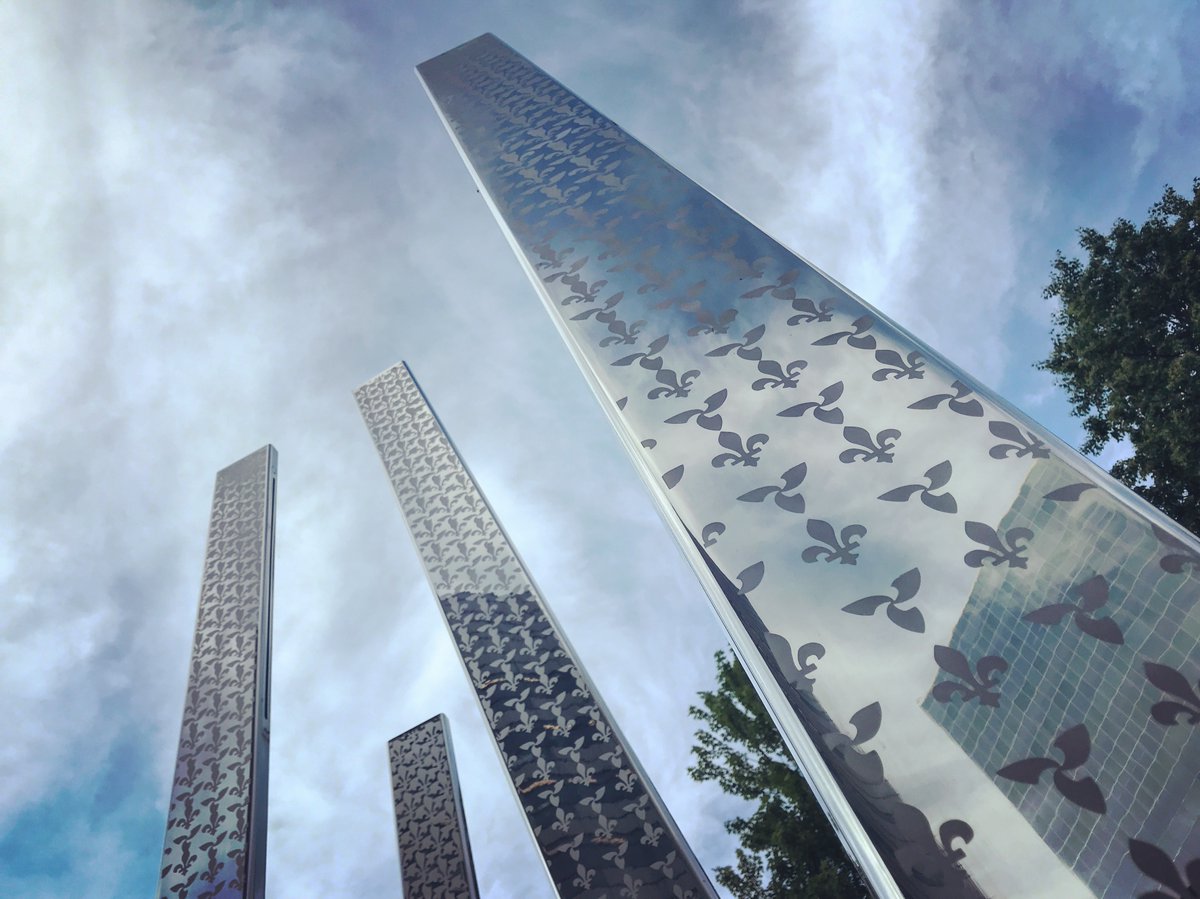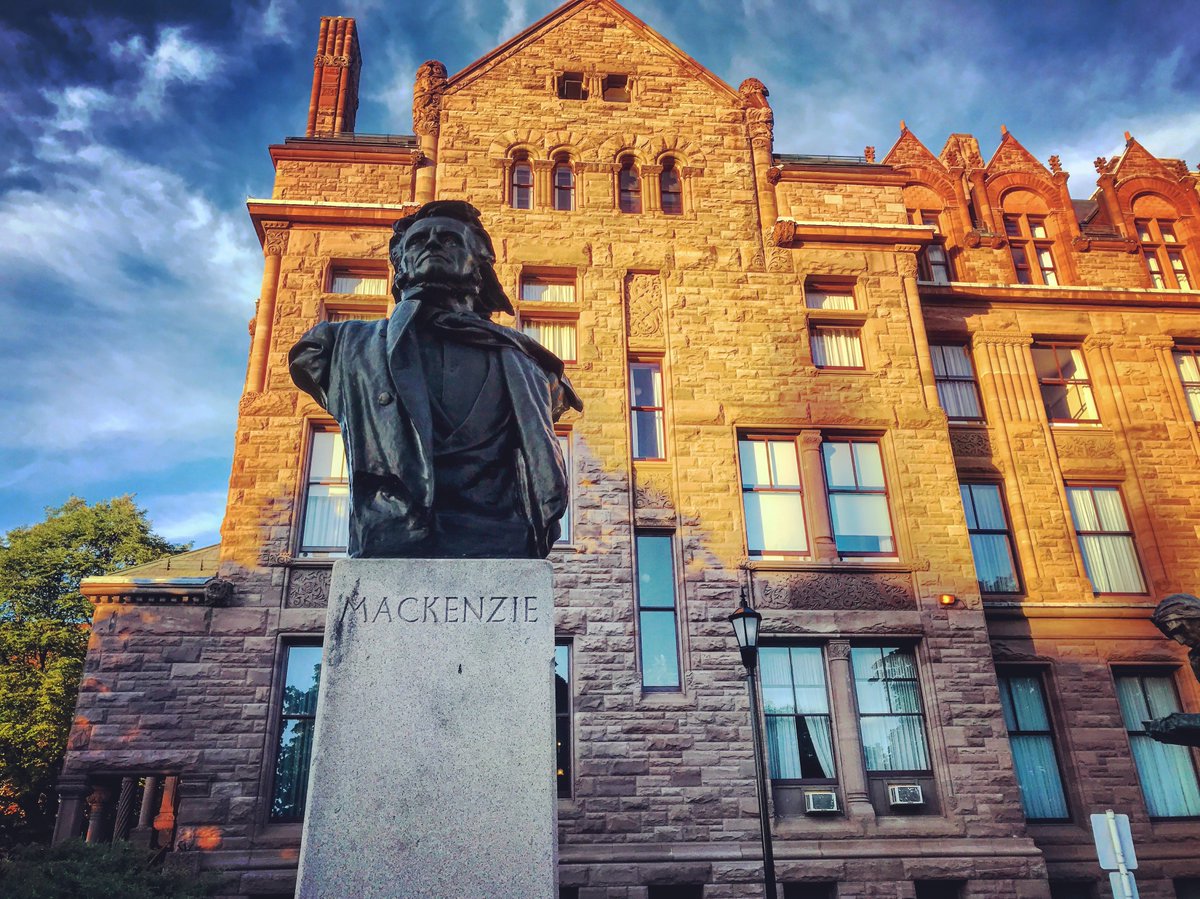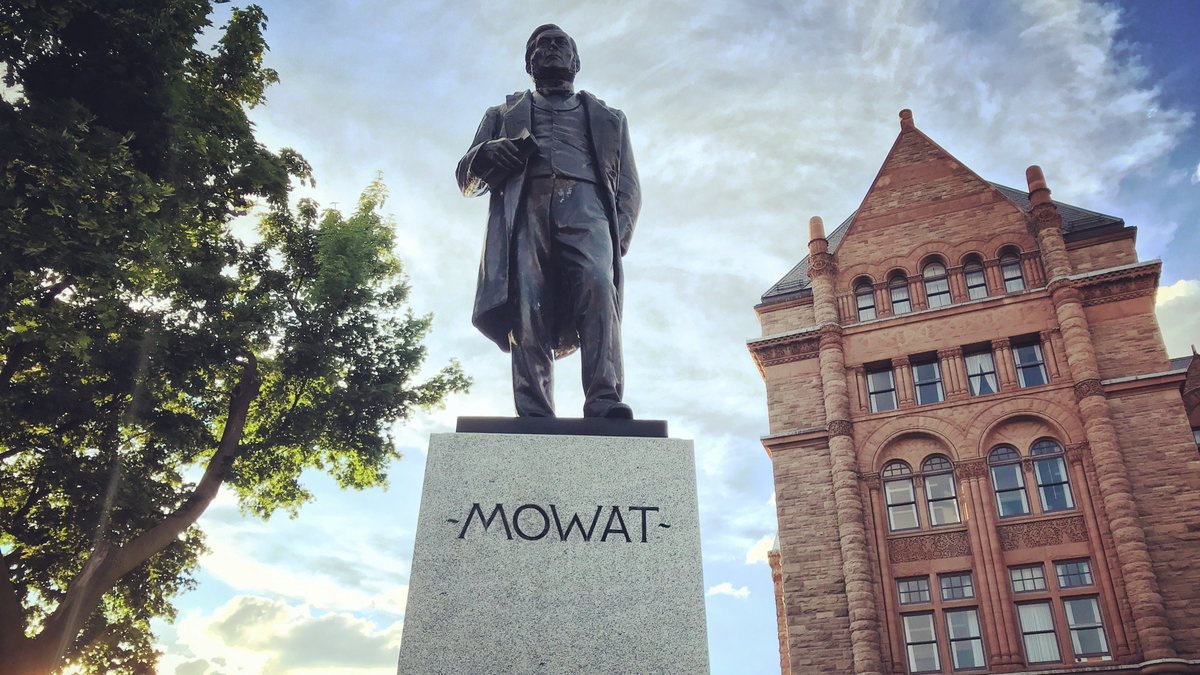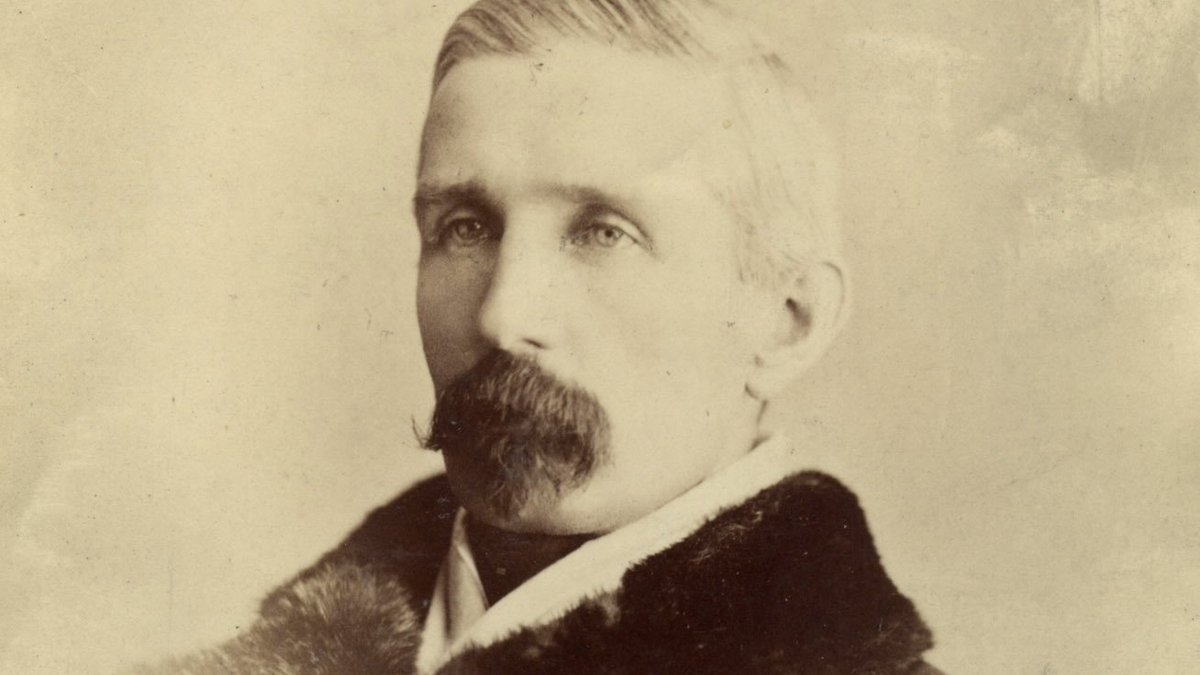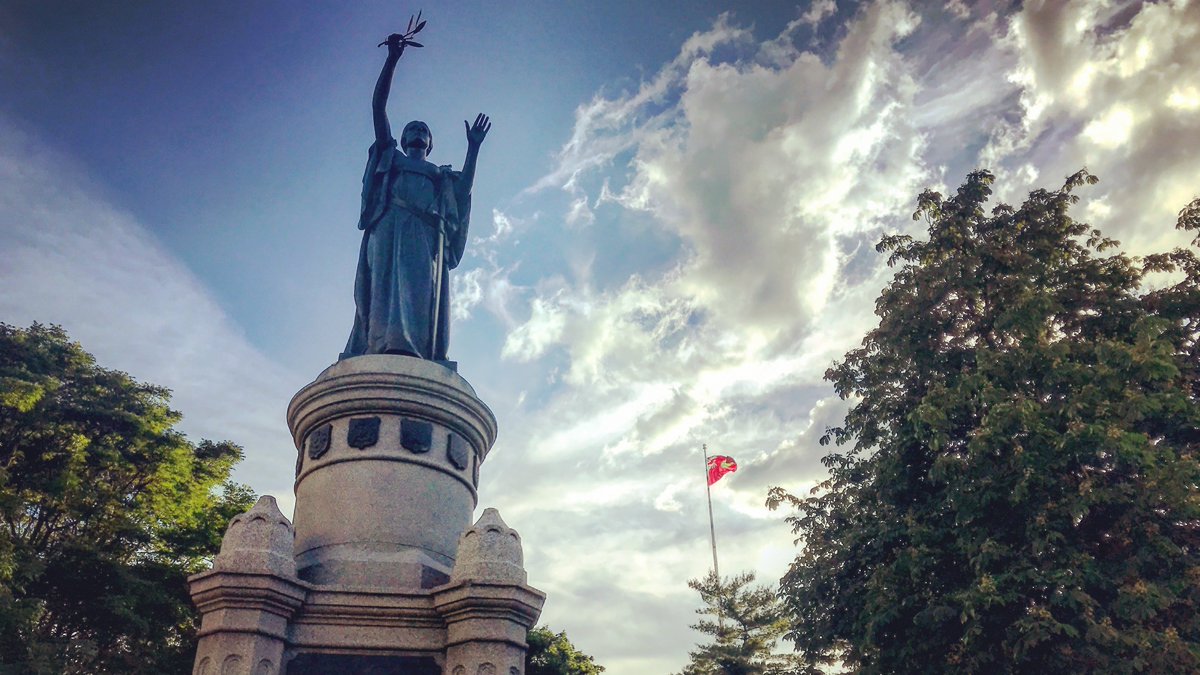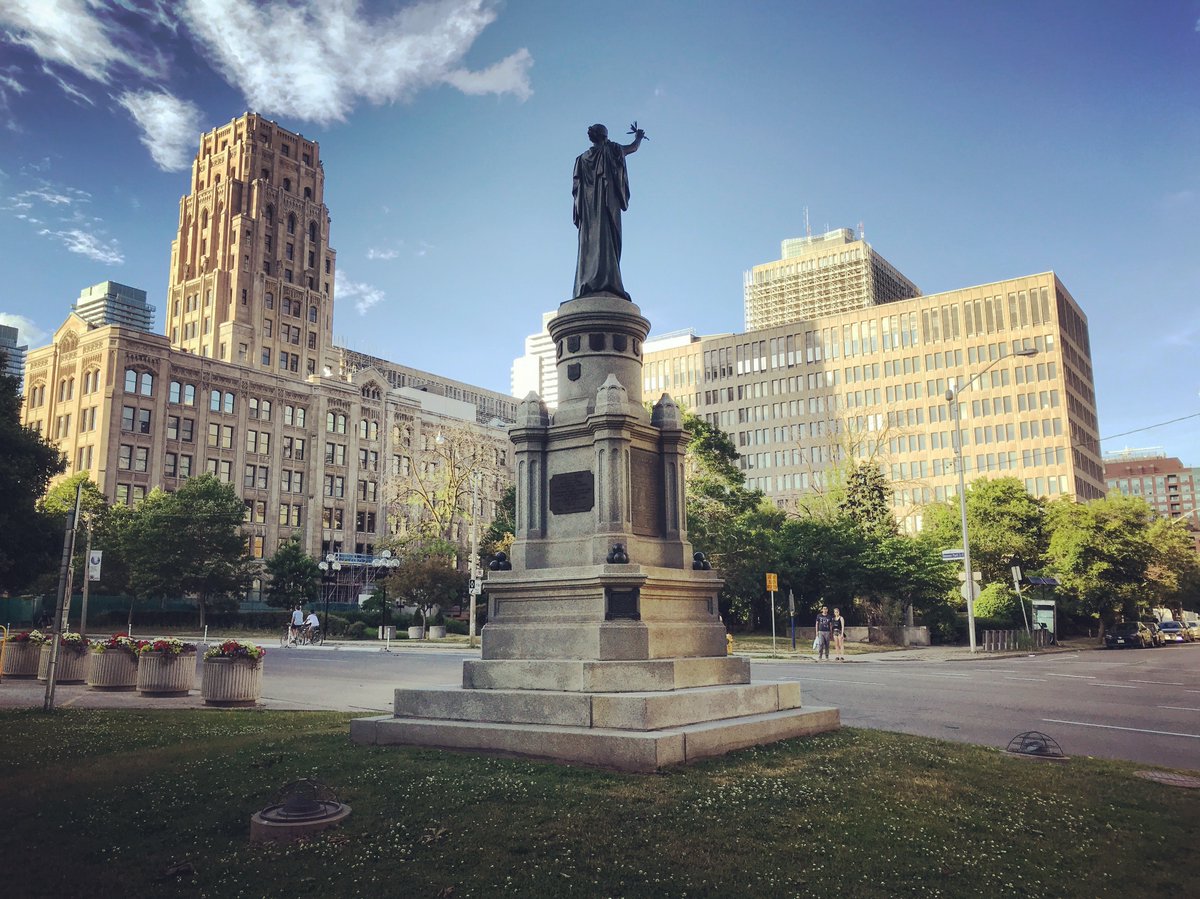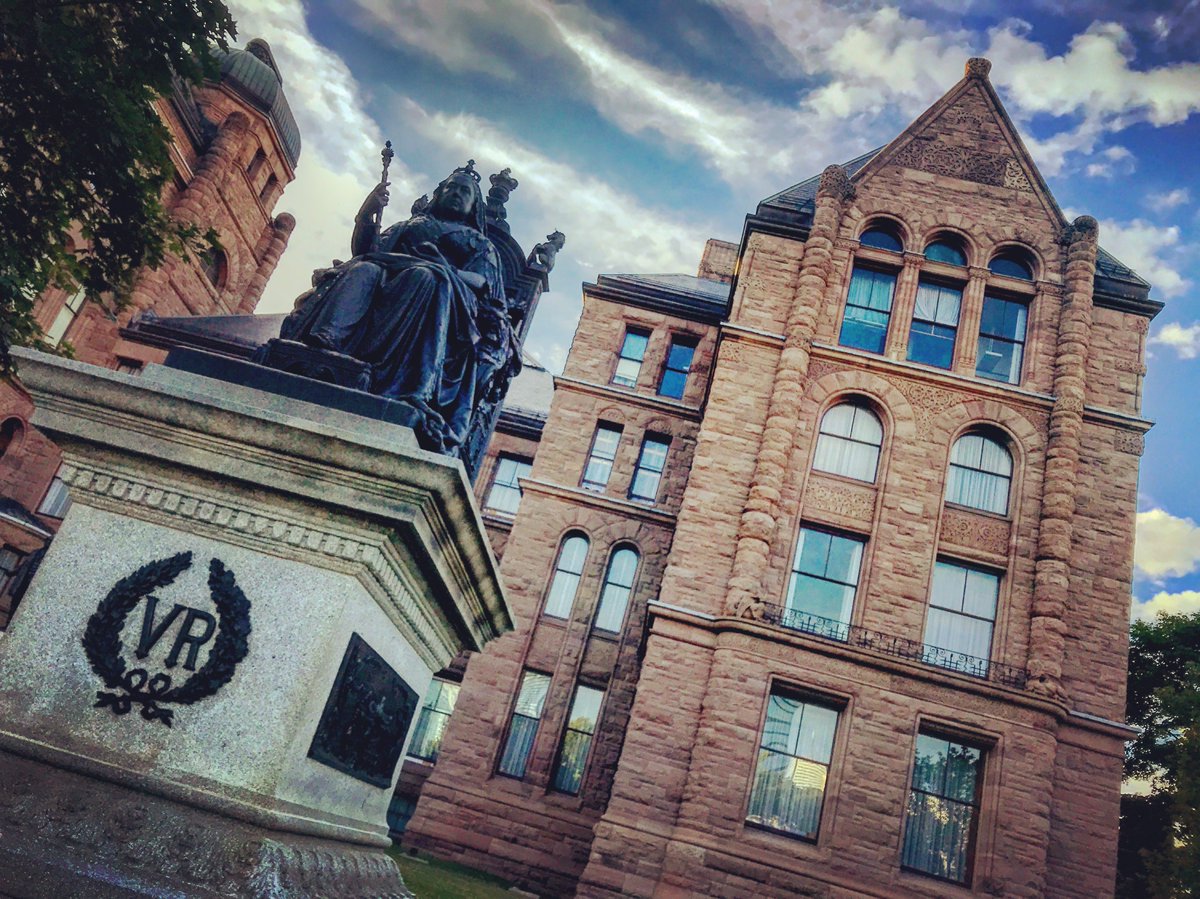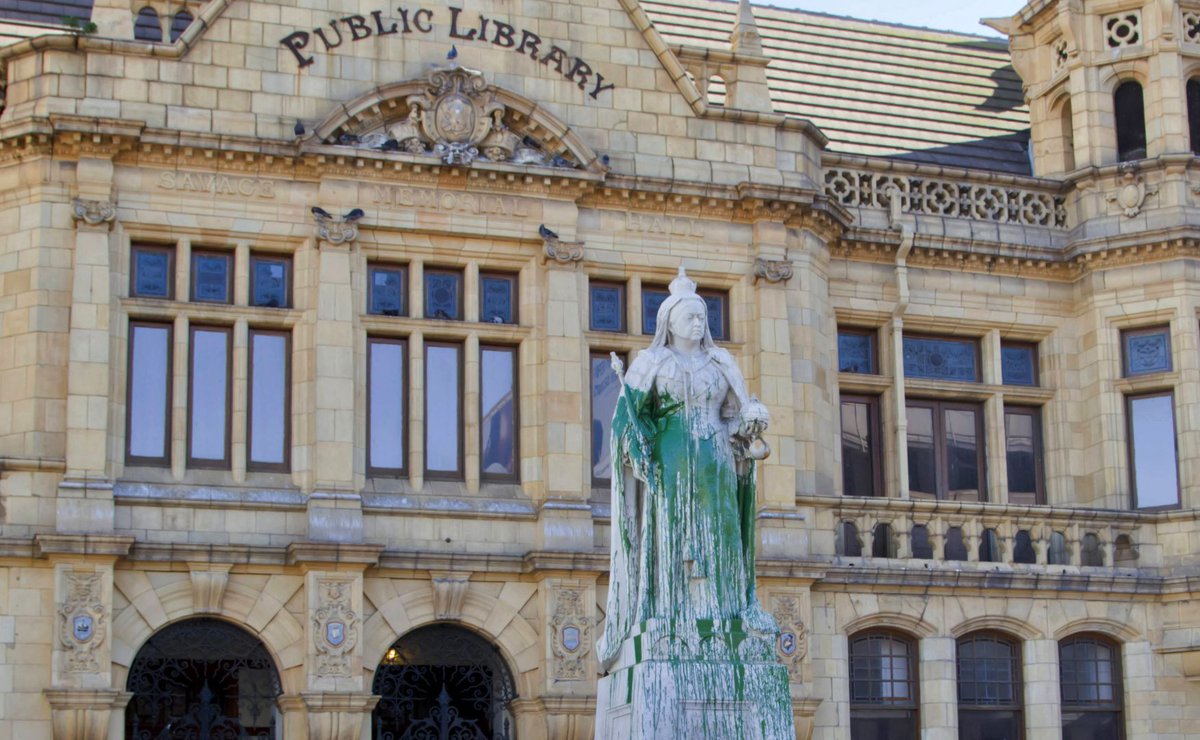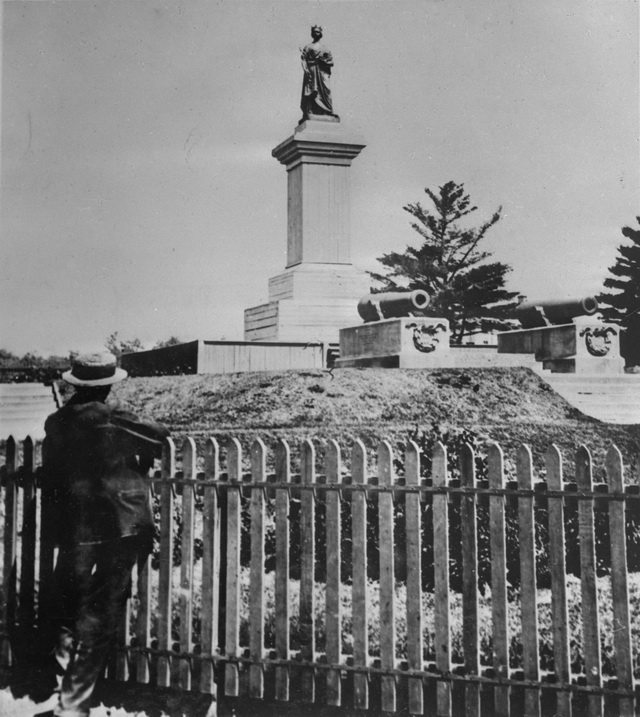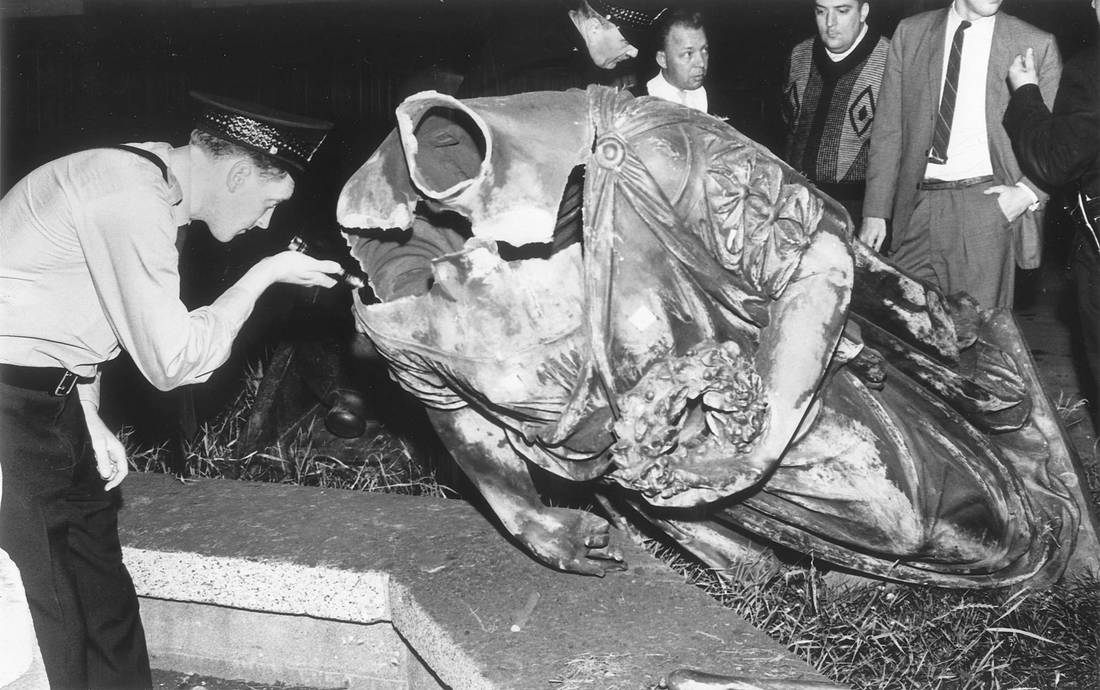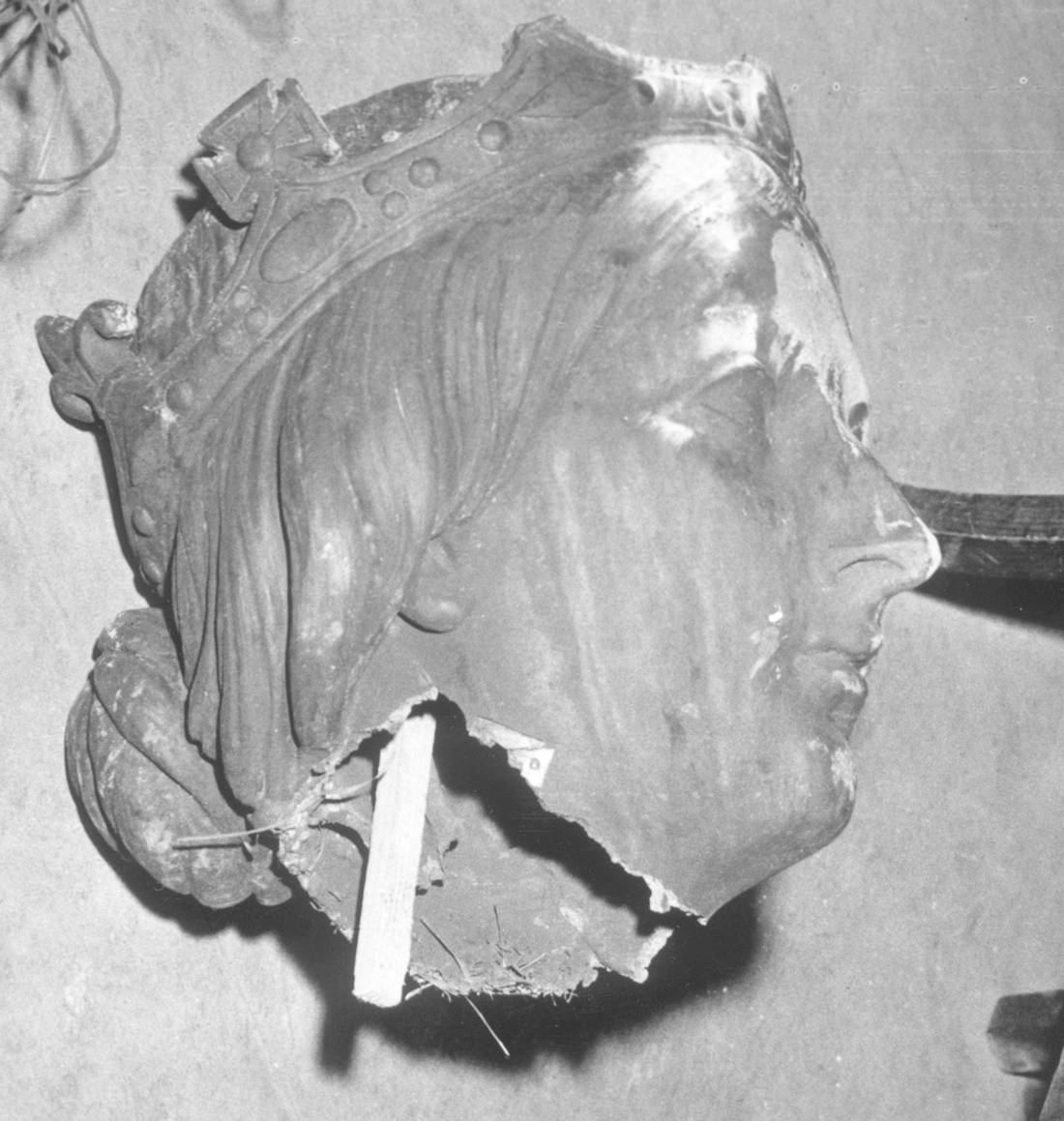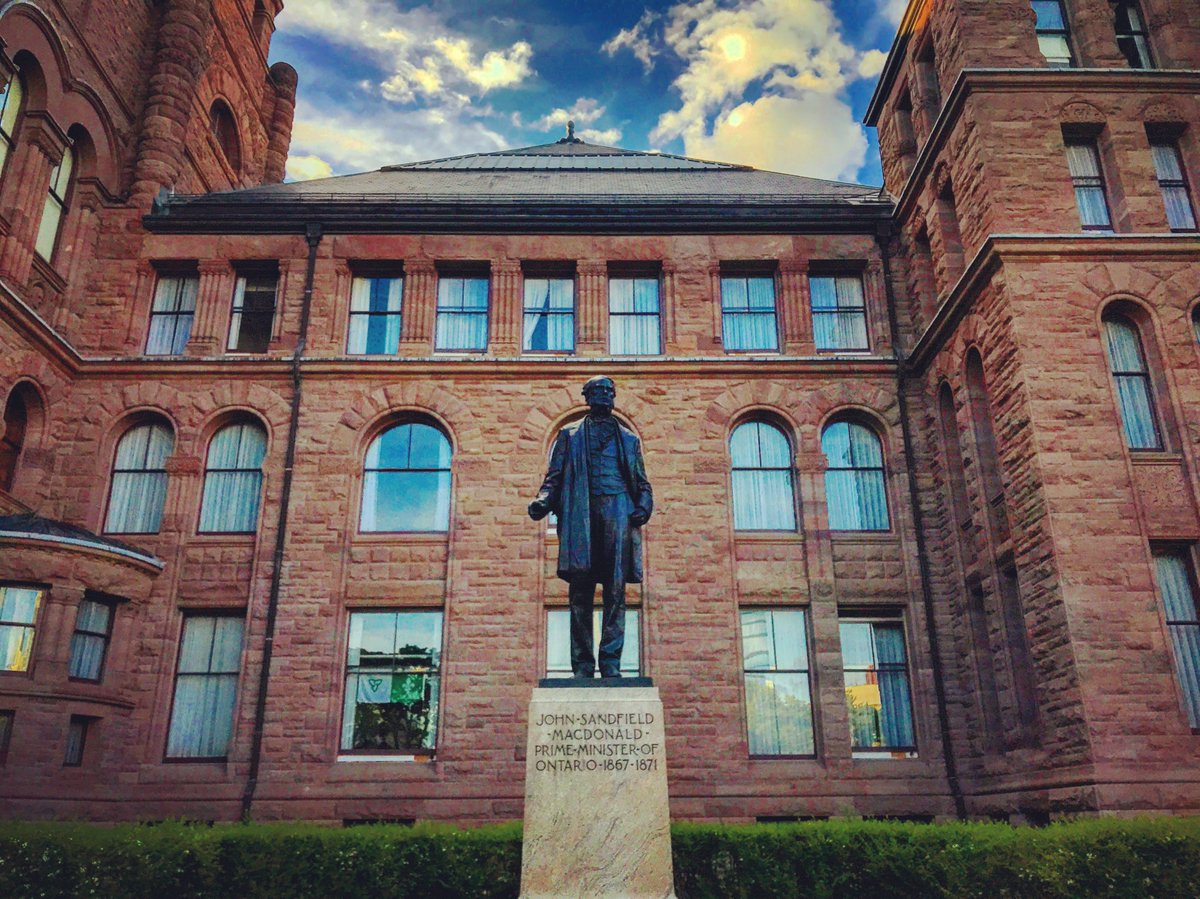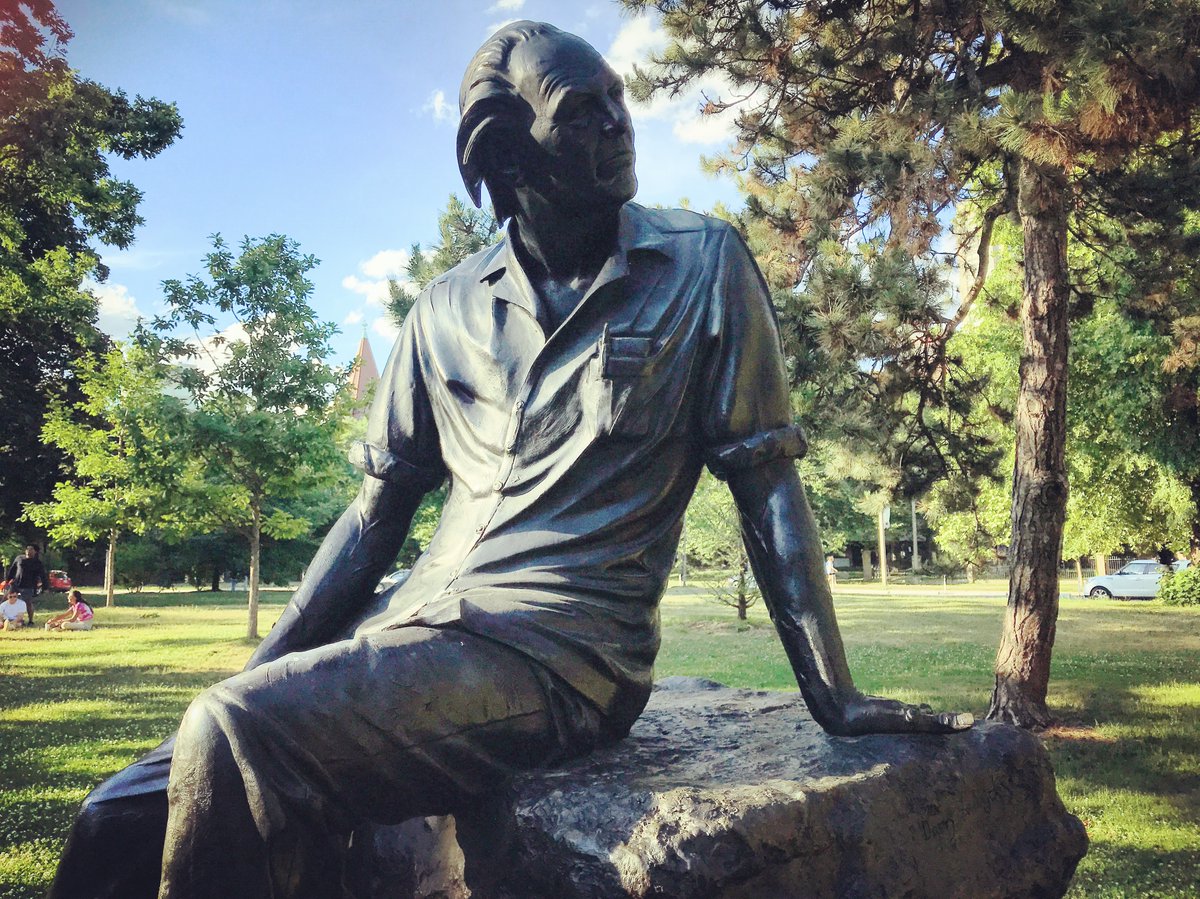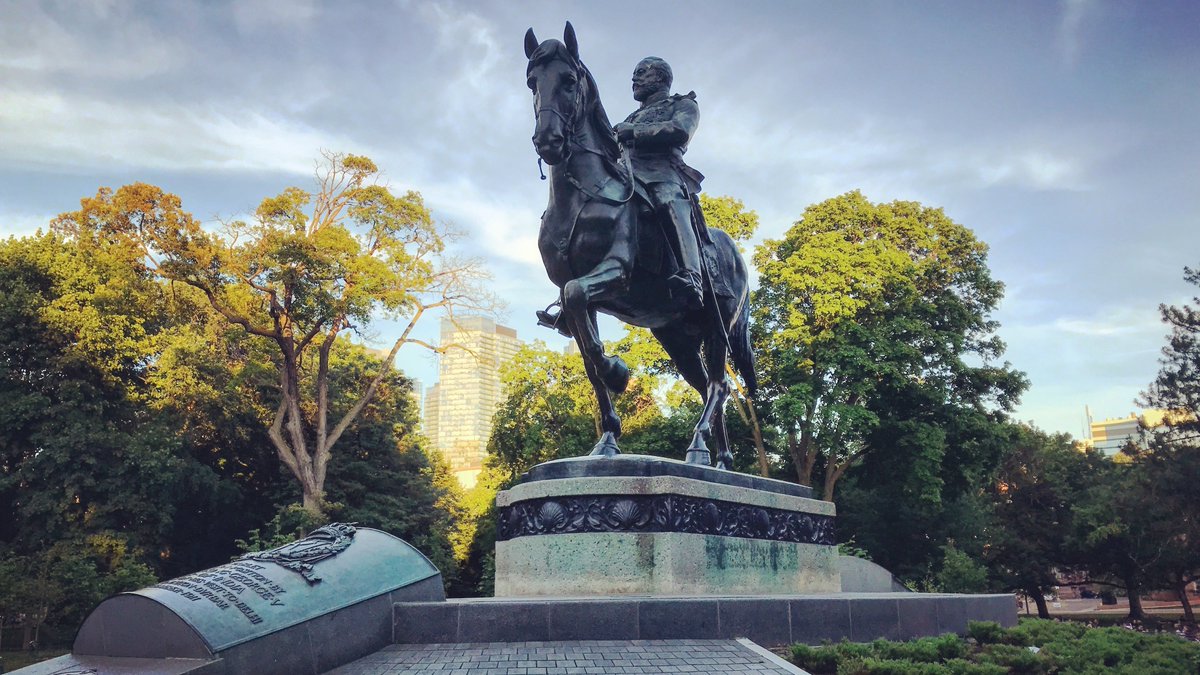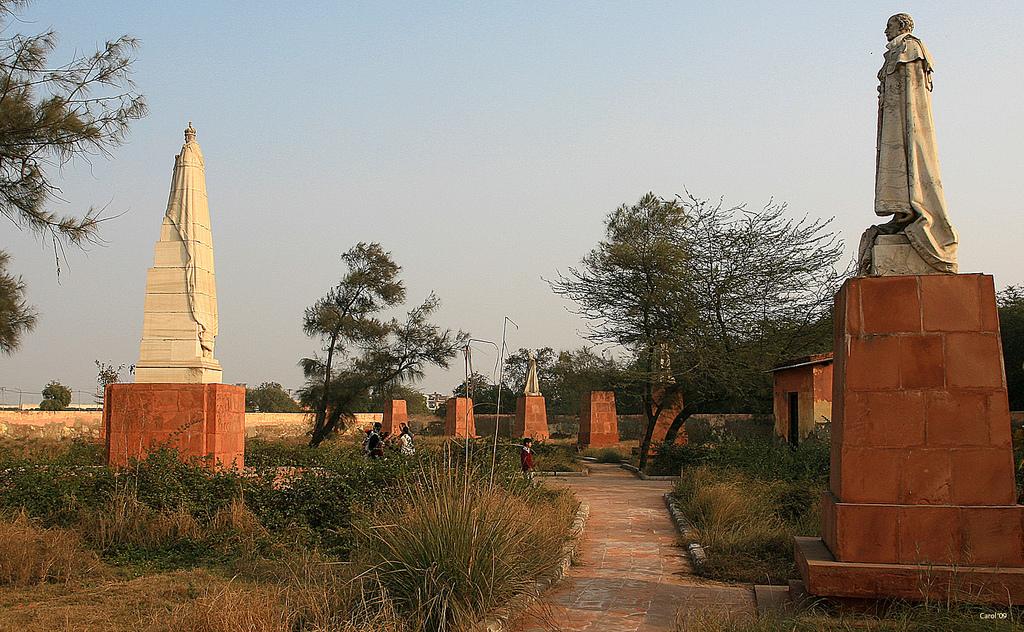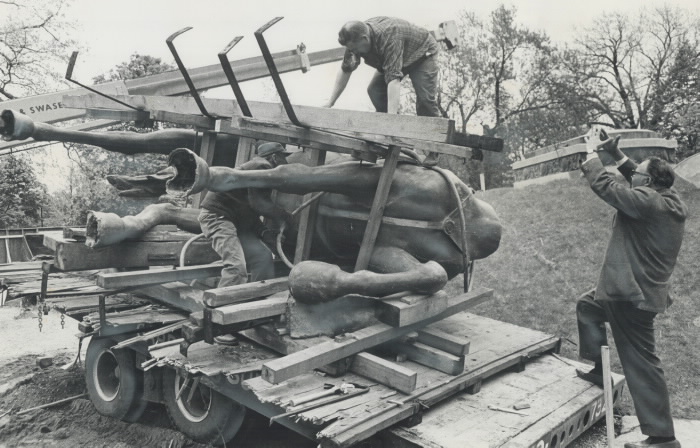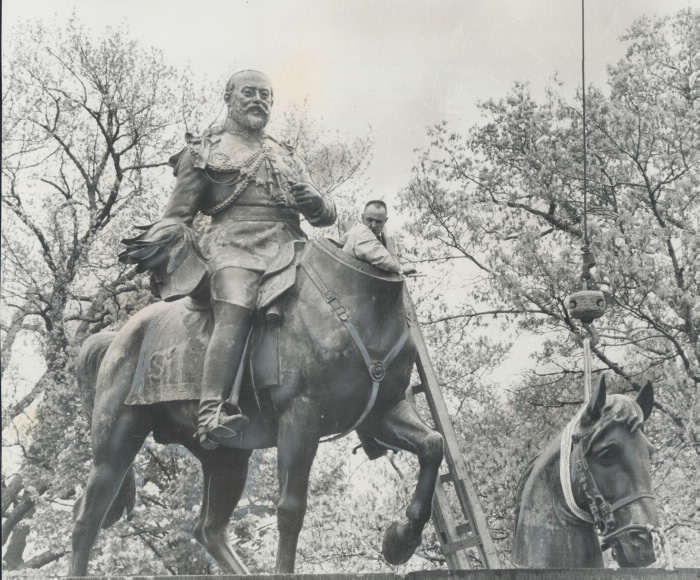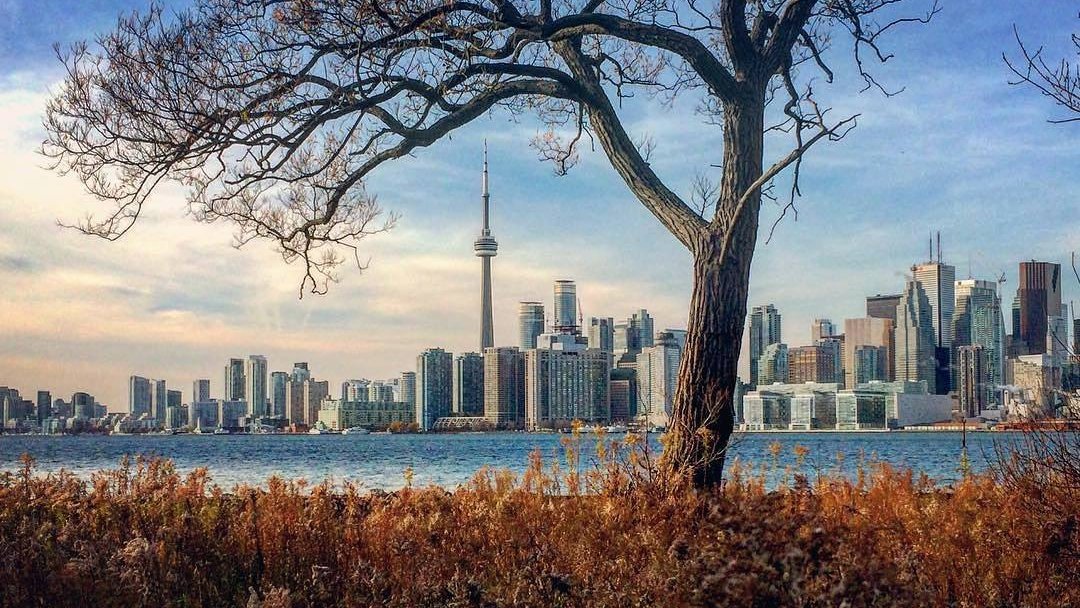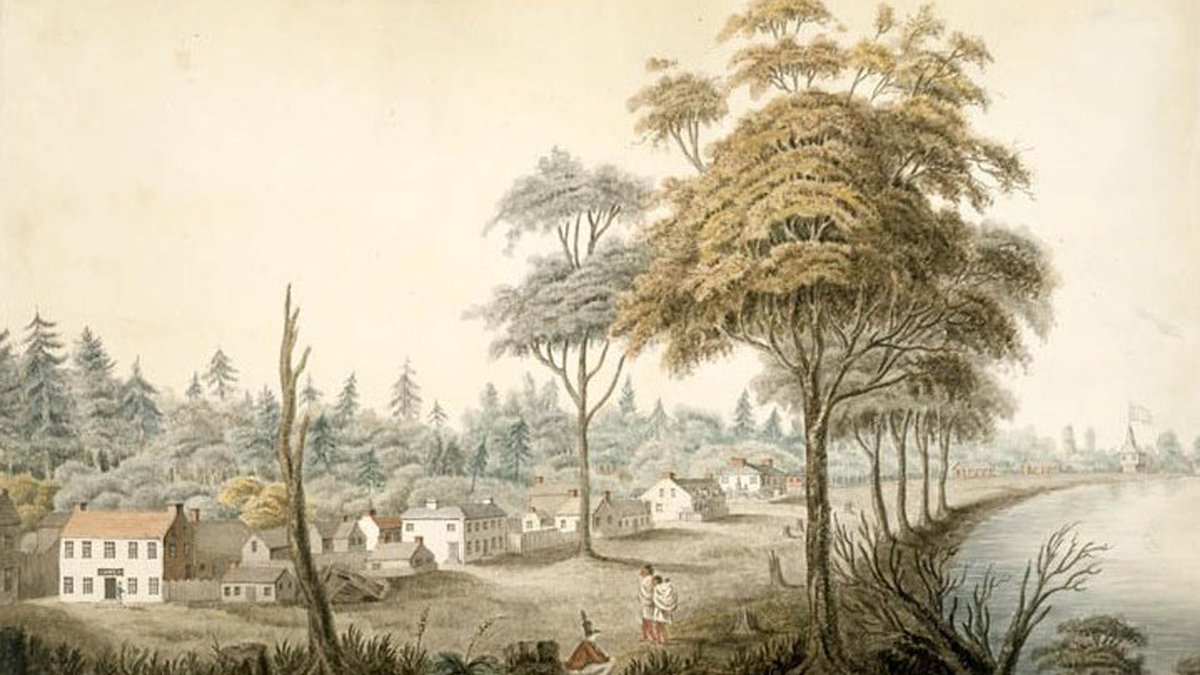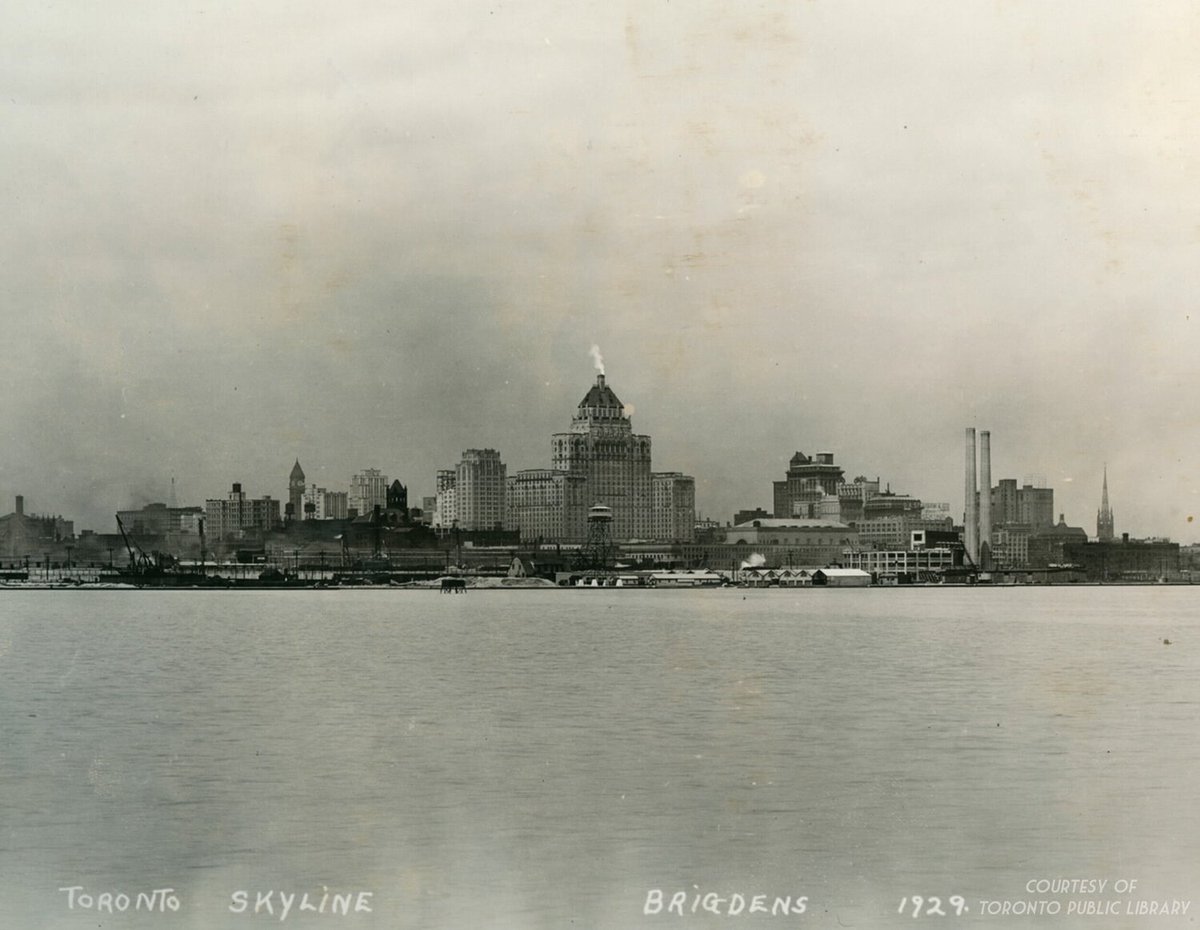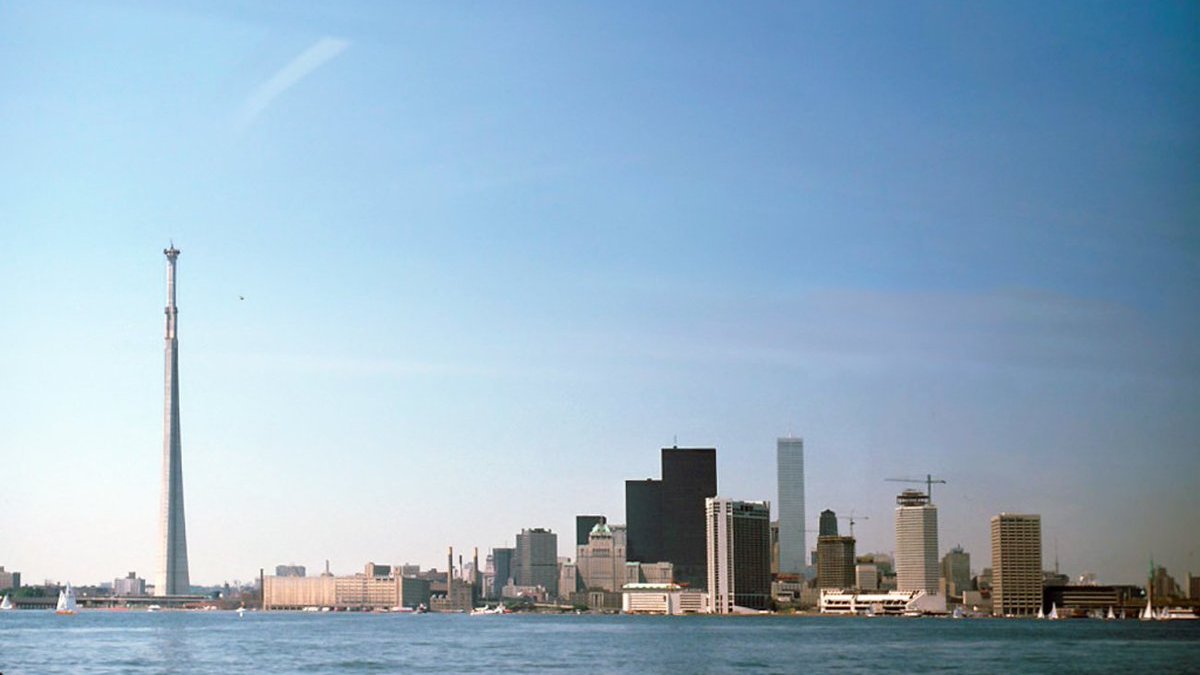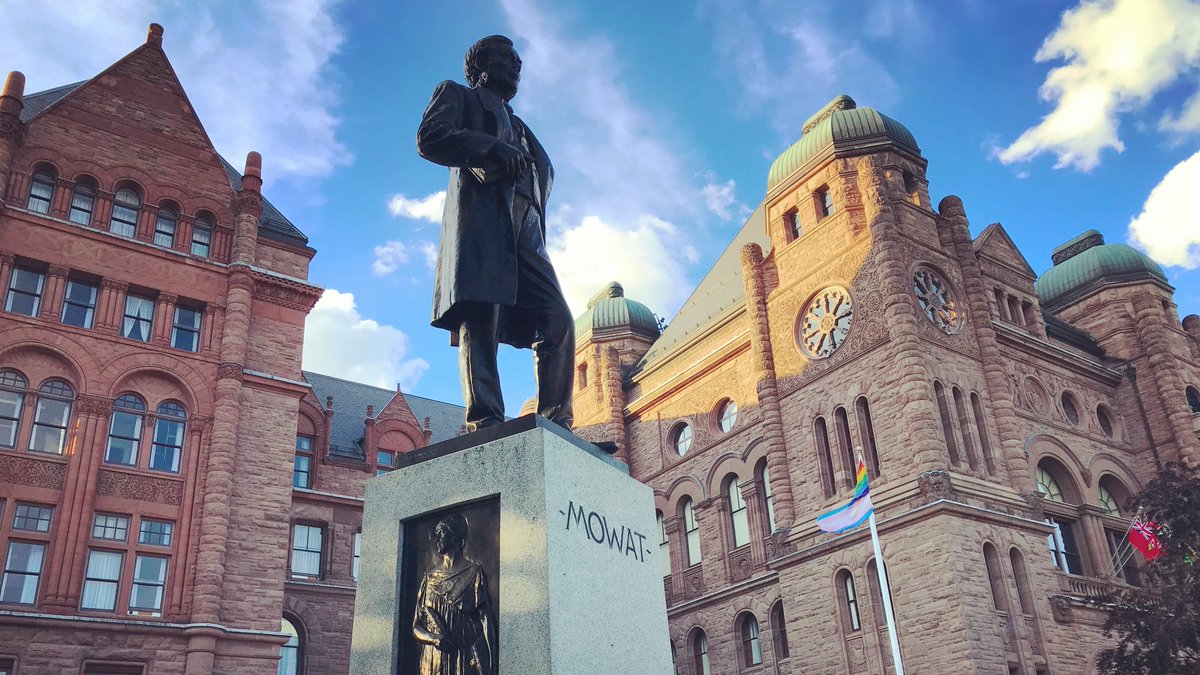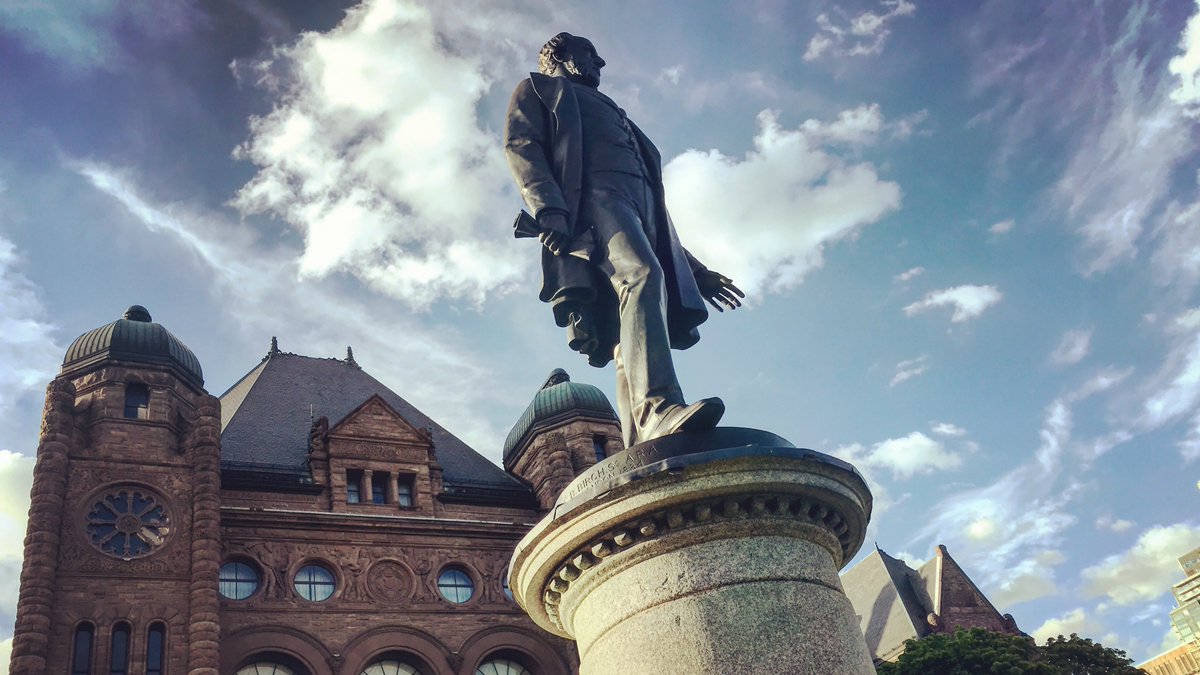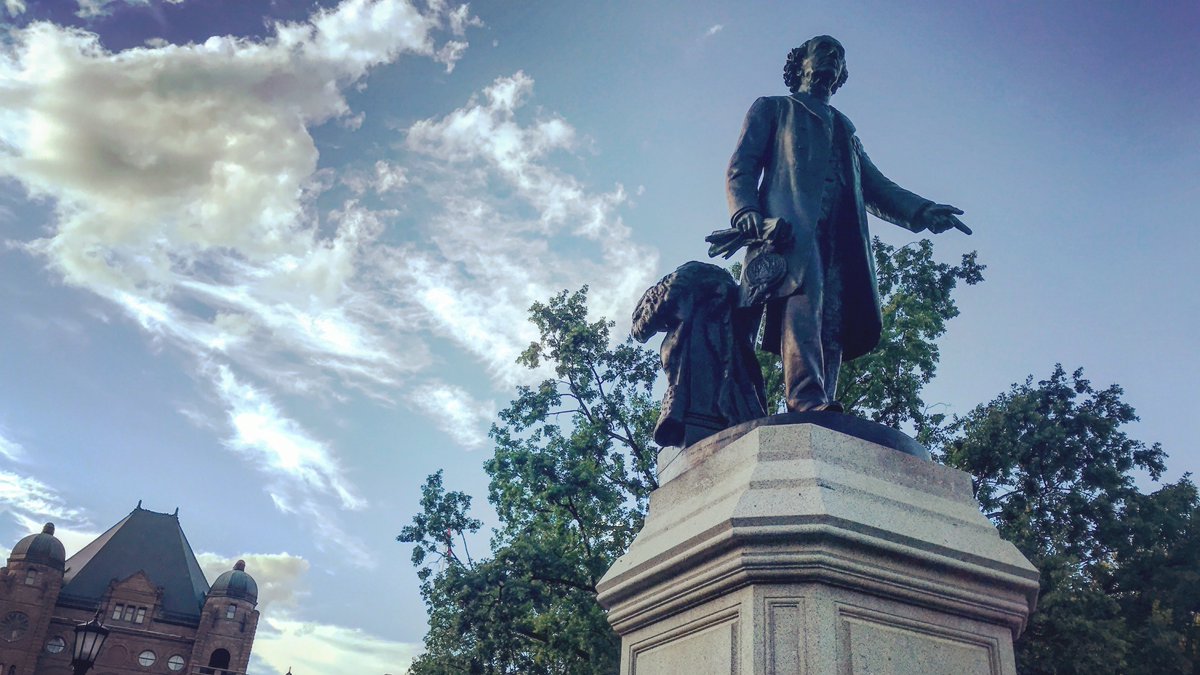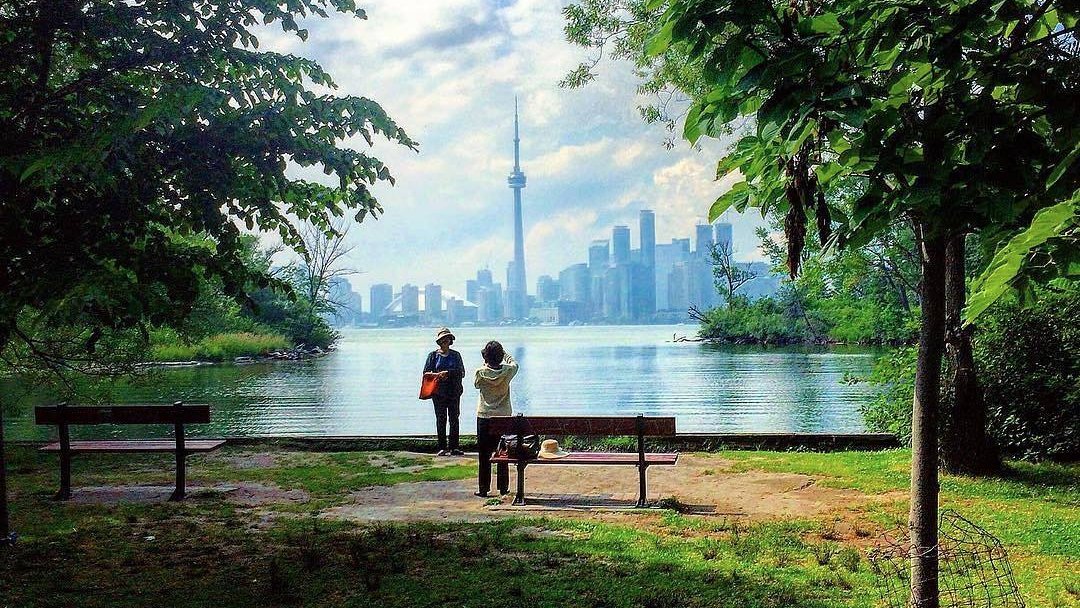1. This seems like a pretty good time to head out on a tour of some of Toronto& #39;s most prominent statues.
Queen& #39;s Park is filled with monuments to men & monarchs whose pasts are much more, uh, complicated than you could ever capture in a bronze statue on a pedestal.
Queen& #39;s Park is filled with monuments to men & monarchs whose pasts are much more, uh, complicated than you could ever capture in a bronze statue on a pedestal.
2. This is the very first monument ever erected in Toronto.
It was placed here 150 years ago to honour the men from Toronto who died fighting against the Fenians (an army of Irish revolutionaries who invaded Canada hoping it would pressure Britain to leave Ireland).
It was placed here 150 years ago to honour the men from Toronto who died fighting against the Fenians (an army of Irish revolutionaries who invaded Canada hoping it would pressure Britain to leave Ireland).
3. It& #39;s a very British monument erected in what was a very British city. And it set the tone.
The provincial parliament was soon built just meters away, and over the next few decades Queen& #39;s Park filled with statues — all reflecting a similar perspective.
The provincial parliament was soon built just meters away, and over the next few decades Queen& #39;s Park filled with statues — all reflecting a similar perspective.
4. Nearly every single statue erected in Queen& #39;s Park over the last 150 years is a statue of a White man. They& #39;re almost all Protestants. And they& #39;re almost all enthusiastic supporters of the British Empire.
5. We& #39;ll start with the most obvious: standing out front in a place of honour, you& #39;ll find Canada& #39;s first prime minister, Sir John A. Macdonald.
6. Macdonald is hailed as the driving force behind Confederation, bringing anglophones & francophones together to establish an independent country, and then uniting it from coast to coast with a railroad.
Here are a few things he said during his time as PM…
Here are a few things he said during his time as PM…
7. “The executions of the Indians... ought to convince the Red Man that the White Man governs." – Sir John A. Macdonald, before publicly hanging eight Cree men for treason — even though public hangings had just been banned.
8. "The Chinaman … has no British instincts or British feelings or aspirations and therefore ought not to have a vote.” – Sir John A. Macdonald while he was stripping Chinese immigrants of their right to vote.
9. Thousands of Chinese workers had risked their lives building his railroad across Canada. Hundreds of them died.
But now, with the railway nearing completion, Macdonald& #39;s government banned them from voting & introduced a head tax on all Chinese immigrants.
But now, with the railway nearing completion, Macdonald& #39;s government banned them from voting & introduced a head tax on all Chinese immigrants.
10. “Chinese immorality [and] eccentricities … are abhorrent to the Aryan race and Aryan principles," Macdonald claimed.
If Canada continued to let Chinese immigrants vote, “the Aryan character of the future of British America should be destroyed.”
If Canada continued to let Chinese immigrants vote, “the Aryan character of the future of British America should be destroyed.”
11. And it& #39;s not just that we& #39;re judging Sir John A. through a modern lens: the opposition was arguing that Chinese-Canadians should keep the vote, and Macdonald was the only person to use the word "Aryan" in parliament during that period.
12. But Macdonald& #39;s not alone. There are ten statues of historical figures standing in Queen& #39;s Park. And even those honouring men who stood up against racism have pretty complicated histories.
13. Just up the lawn from Macdonald stands John Graves Simcoe, the founder of Toronto.
He& #39;s celebrated for ending slavery in our province, passing the first law to abolish the practice anywhere in the British Empire. But it wasn& #39;t quite as simple as that makes it sounds.
He& #39;s celebrated for ending slavery in our province, passing the first law to abolish the practice anywhere in the British Empire. But it wasn& #39;t quite as simple as that makes it sounds.
14. Simcoe hated slavery, but he also chose to fill his government with slaveowners who forced him into a compromise. Instead of abolishing slavery immediately, his new law just started phasing it out gradually.
15. Anyone already enslaved in Upper Canada would be enslaved for the rest of their lives. Their children would be born into slavery, too, enslaved until they reached the age of 25.
16. Simcoe would later even fight a war to *preserve* slavery in Haiti. He was put in command of the British troops trying to keep half a million people enslaved during the Haitian Revolution — before finally deserting his post.
17. Not far from Simcoe& #39;s statue, we have George Brown. He was a Father of Confederation, the founder of the Globe newspaper, and a passionate abolitionist — he even co-founded the Anti-Slavery Society of Canada.
18. But George Brown also hated Irish-Catholics with a passion. He once called them “as great a curse … as were the locusts to the land of Egypt.” At the time, Toronto was the most Irish city on the continent; violence between Protestants & Catholics was commonplace.
19. "Irish beggars are to be met everywhere," Brown& #39;s newspaper complained, "and they are as ignorant and vicious as they are poor. They are lazy, improvident and unthankful; they fill our poorhouses and our prisons, and are as brutish in their superstition as Hindoos."
20. George Brown was also far from a generous employer: when his printers went on strike, sick of dangerous conditions & long hours, he had the leaders thrown in prison.
He would eventually be murdered by one of his own disgruntled employees.
He would eventually be murdered by one of his own disgruntled employees.
21. Next to Brown& #39;s statue, there& #39;s Sir James Whitney. He served as premier of Ontario in the early 1900s, celebrated for fighting corruption, strengthening the University of Toronto, and establishing public hydro ownership.
But…
But…
22. Whitney also tried to crush Franco-Ontarian culture by banning French from being taught after the second grade. It sparked a national crisis just as the First World War was about to begin.
23. A century later, a new monument has recently been erected just across the street: it celebrates Franco-Ontarian culture & history with a mix of trilliums and fleurs-de-lis.
24. Next to the legislative building, there& #39;s a bust of William Lyon Mackenzie.
Toronto& #39;s first mayor has his own complicated history: he led a rebel army down Yonge Street in an attempt to overthrow the government & establish an independent Canadian republic.
Toronto& #39;s first mayor has his own complicated history: he led a rebel army down Yonge Street in an attempt to overthrow the government & establish an independent Canadian republic.
25. Between Mackenzie & Brown, you& #39;ll find Sir Oliver Mowat.
He was premier of Ontario *and* a Father of Confederation. He introduced secret ballots and gave more men the right to vote.
He was premier of Ontario *and* a Father of Confederation. He introduced secret ballots and gave more men the right to vote.
26. But Mowat was also good friends with Toronto& #39;s most notorious Confederate sympathizer: George Denison III.
It was Mowat who made Denison a police magistrate, giving the notorious racist the powers of a judge.
It was Mowat who made Denison a police magistrate, giving the notorious racist the powers of a judge.
27. Over on the other side of Queen& #39;s Park, you& #39;ll find a monument dedicated to the soldiers from Toronto who died trying to crush the Northwest Resistance, fighting against Louis Riel, the Métis, the Cree & the Assiniboine.
(Denison was one of those soldiers sent west.)
(Denison was one of those soldiers sent west.)
28. "That monument represents a violent struggle that took away our sovereignty as free people..." Métis historian @michifman told the CBC, "have something beside it that talks about the impacts of the Northwest Resistance on Métis, the Métis Nation itself, from that perspective"
29. If you& #39;re looking for diversity at Queen& #39;s Park, this is the best you& #39;ll find: Queen Victoria is the only historical figure here who *isn& #39;t* a White man.
She sits right outside the legislature, a replica of an identical statue in Hong Kong.
She sits right outside the legislature, a replica of an identical statue in Hong Kong.
30. Queen Victoria is the queen the Queen& #39;s Park is named after, but for many people around the world, she& #39;s a symbol of a brutal empire.
Her statue in South Africa has repeatedly been vandalized in protest. In Kenya, she was knocked down a few years ago & beheaded.
Her statue in South Africa has repeatedly been vandalized in protest. In Kenya, she was knocked down a few years ago & beheaded.
31. Even the statue of Queen Victoria that Toronto& #39;s statue is based on — the one in Hong Kong — was vandalized by a Communist activist in 1996.
He splattered her with red paint & broke her nose with a hammer in the name of "cultural unification" with China.
He splattered her with red paint & broke her nose with a hammer in the name of "cultural unification" with China.
32. And the *first* statue of Queen Victoria to stand in Queen& #39;s Park — there for just a few years in the 1870s — is thought to be the same one that eventually ended up in Quebec City...
...where the FLQ blew it up in 1963.
(She& #39;s now part of the collection at @CanMusHistory.)
...where the FLQ blew it up in 1963.
(She& #39;s now part of the collection at @CanMusHistory.)
33. Beyond Queen Victoria, the most diversity you& #39;ll find on display at Queen& #39;s Park is John Sandfield Macdonald*—because our first premier was Catholic. Or the poet Al Purdy, because he wasn& #39;t religious at all.
*Not to be confused with the statue of the *other* John Macdonald.
*Not to be confused with the statue of the *other* John Macdonald.
34. You& #39;ll find Queen Victoria& #39;s son here, too.
The statue of King Edward VII has one of the most complicated histories in all of Queen& #39;s Park. The only reason he& #39;s here is because people in another city decided to take him down.
The statue of King Edward VII has one of the most complicated histories in all of Queen& #39;s Park. The only reason he& #39;s here is because people in another city decided to take him down.
35. King Edward used to stand outside the famous Red Fort in Delhi: a symbol of British rule over India. But after independence, India didn’t want British statues anymore. So they took them down & replaced them.
36. Delhi& #39;s old British statues were taken down from their places of honour and stashed away in a forgotten corner of Coronation Park, where the old British rulers once held big imperial celebrations.
The BBC called it "the graveyard of the British Empire."
The BBC called it "the graveyard of the British Empire."
37. In the 1960s, a British-loving Toronto entrepreneur arranged to have Delhi& #39;s old statue of King Edward cut into pieces & shipped here from India — because he thought the city needed a good equestrian statue. So that& #39;s how King Edward ended up in Queen’s Park.
38. For a long time, Queen& #39;s Park was the only public place in Toronto where you could find statues. But in the decades that followed, as new monuments were erected across the city, the same pattern repeated itself.
39. A report a few years ago found that only 20% of Toronto& #39;s city-owned statues depict women. You& #39;ll find even fewer who are Black, Indigenous or other People of Colour. In one of the most diverse cities in the world, most of the statues commemorate White men.
40. That, of course, is because for much of the city& #39;s very British history, White men have been the ones in power.
And they did more than just erect statues. It was those same White men—mostly British & Protestant—who built many of the institutions & systems we still use today
And they did more than just erect statues. It was those same White men—mostly British & Protestant—who built many of the institutions & systems we still use today
41. Some were truly horrifying people; others firmly believed in democracy & diversity but still had inevitable blind spots — and Toronto& #39;s monuments are a testament to the fact that other voices in the city have been marginalized for an awfully long time.
42. So *of course* we need to be questioning, reforming and sometimes even replacing the things the men up on those pedestals built — so we can make Toronto a safer, more equitable, and more welcoming place for everyone.
If you& #39;re interested in learning more the history of slavery in Canada, @NHenryFundi has a recent piece in @Spacing: http://spacing.ca/toronto/2020/06/09/if-black-lives-truly-matter-in-canada-an-apology-for-slavery-is-only-a-first-step/">https://spacing.ca/toronto/2...
If you& #39;re interested in learning more about George Denison III and some of the Torontonian support for the Confederacy during the American Civil War, I wrote a thread about it recently: https://twitter.com/TODreamsProject/status/1274070044805390348">https://twitter.com/TODreamsP...
If you& #39;re interested in learning more about the story behind King Edward& #39;s statue and how it ended up in Toronto, we& #39;ve got a whole little episode of @thisiscanadiana about it: http://thisiscanadiana.com/episode-pages/2018/8/4/the-king-of-queens-park">https://thisiscanadiana.com/episode-p...
If you& #39;re interested in learning more about John Graves Simcoe and his complicated relationship with slavery, I wrote a piece for @Spacing a few years back: http://spacing.ca/toronto/2017/09/05/john-graves-simcoes-weird-relationship-slavery/">https://spacing.ca/toronto/2...
And if you& #39;d like to learn more about the monument to the soldiers from Toronto who fought against Riel during the Northwest Resistance & the response to it, you can find the full CBC article where I came across Jesse Thistle& #39;s quotes here: https://www.cbc.ca/news/indigenous/ontario-metis-louis-riel-day-northwest-rebellion-monument-1.4404191">https://www.cbc.ca/news/indi...

 Read on Twitter
Read on Twitter
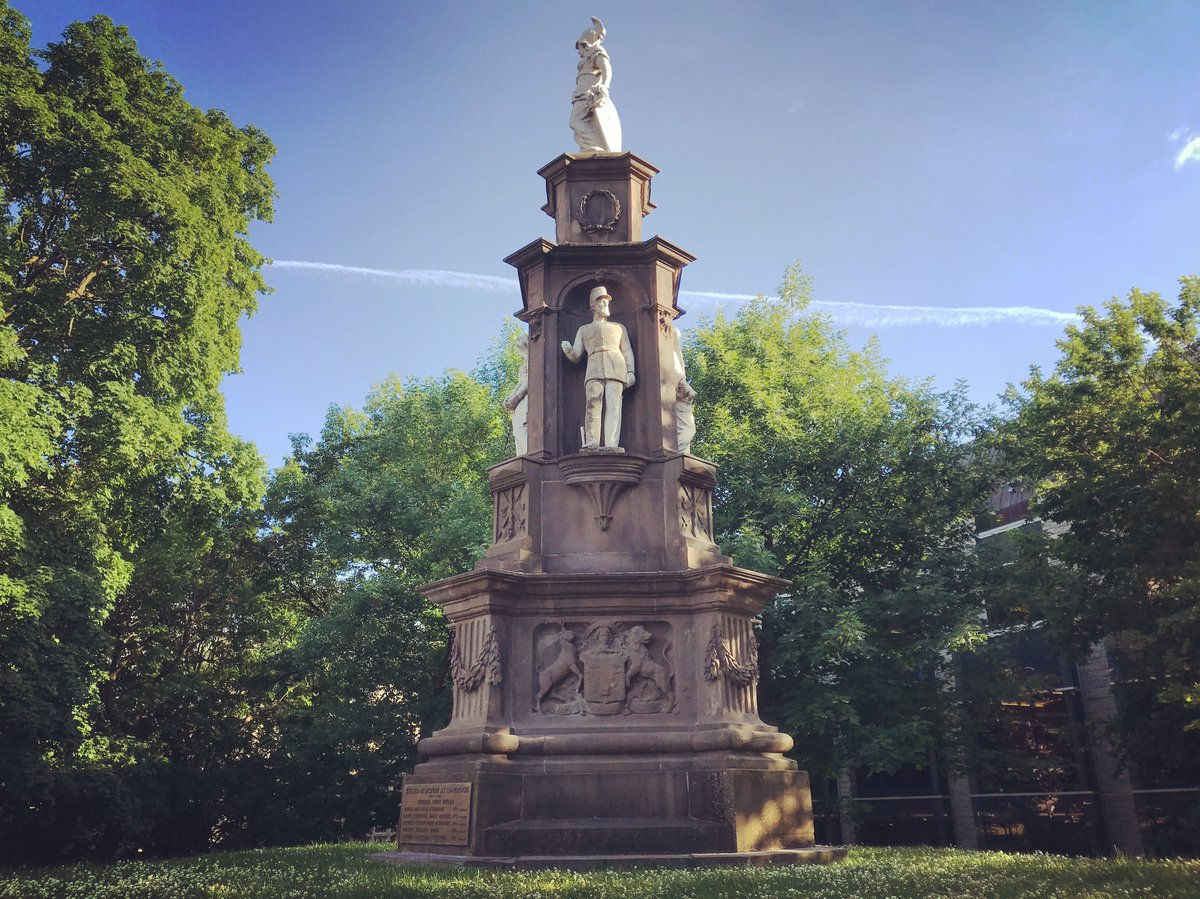
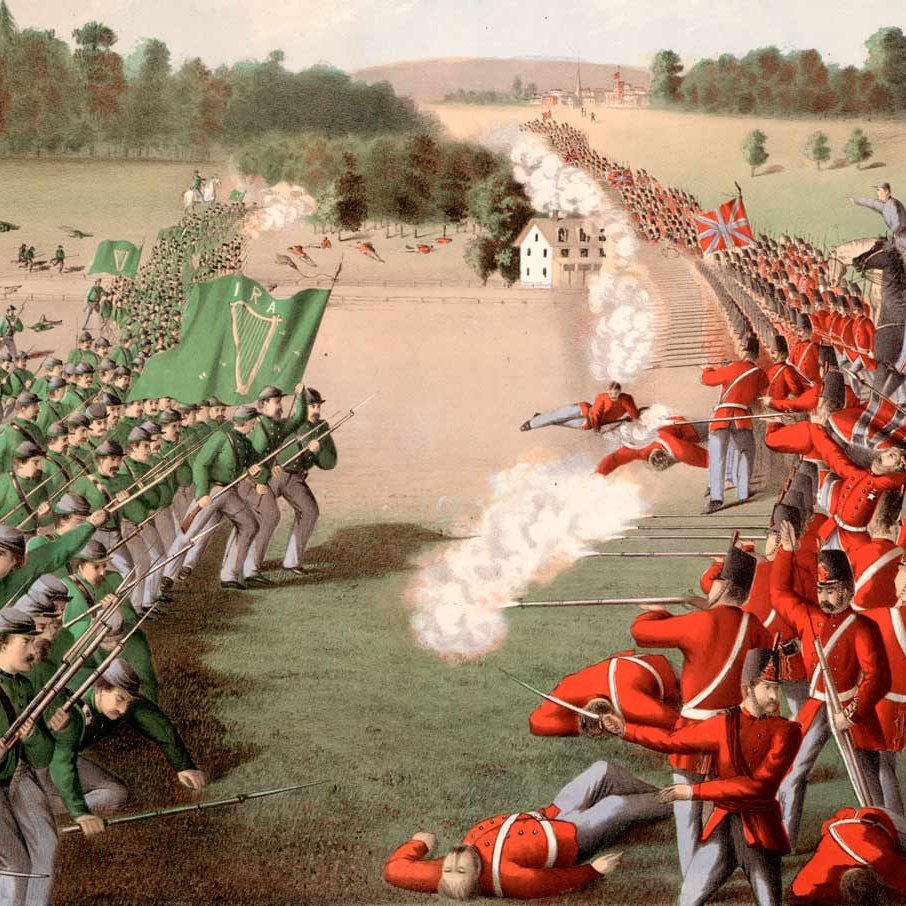
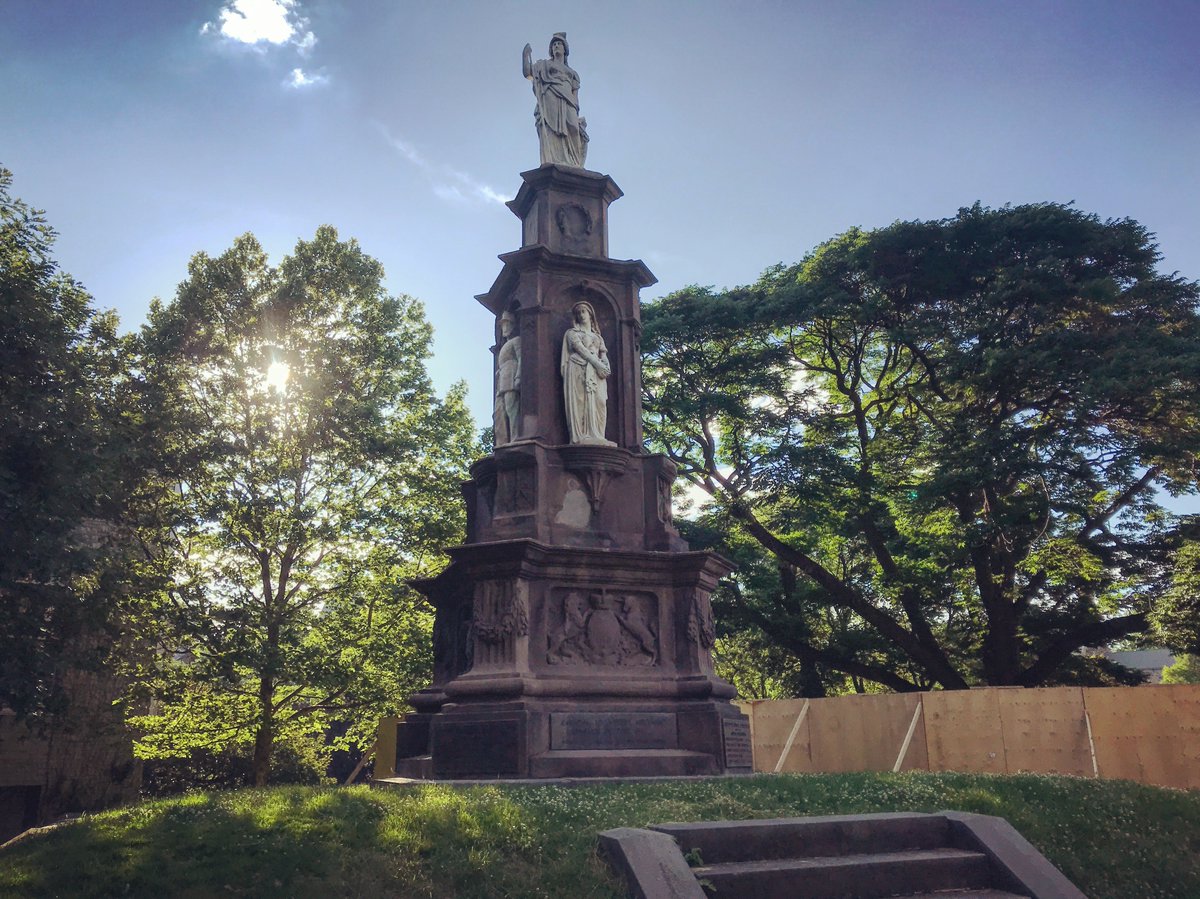
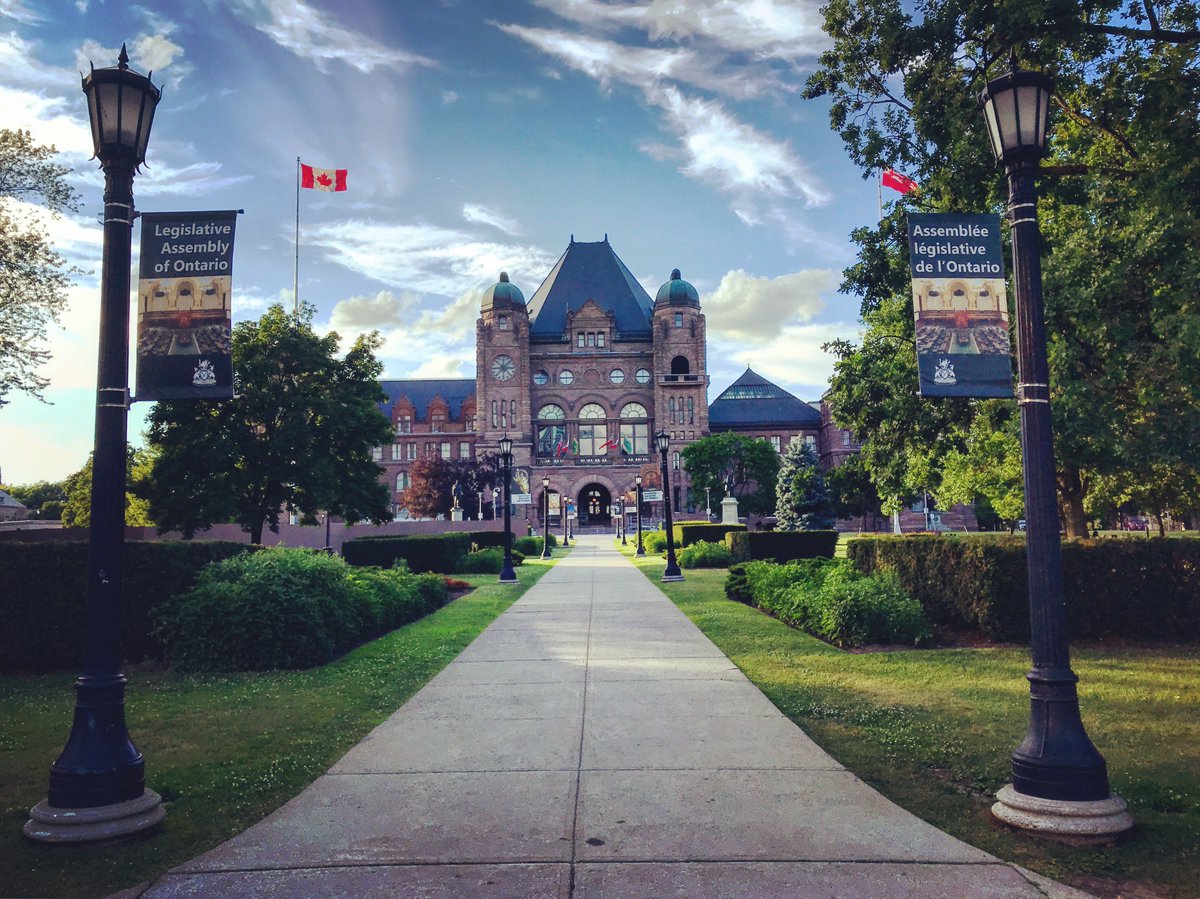
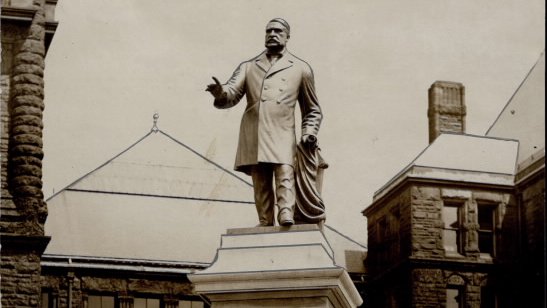

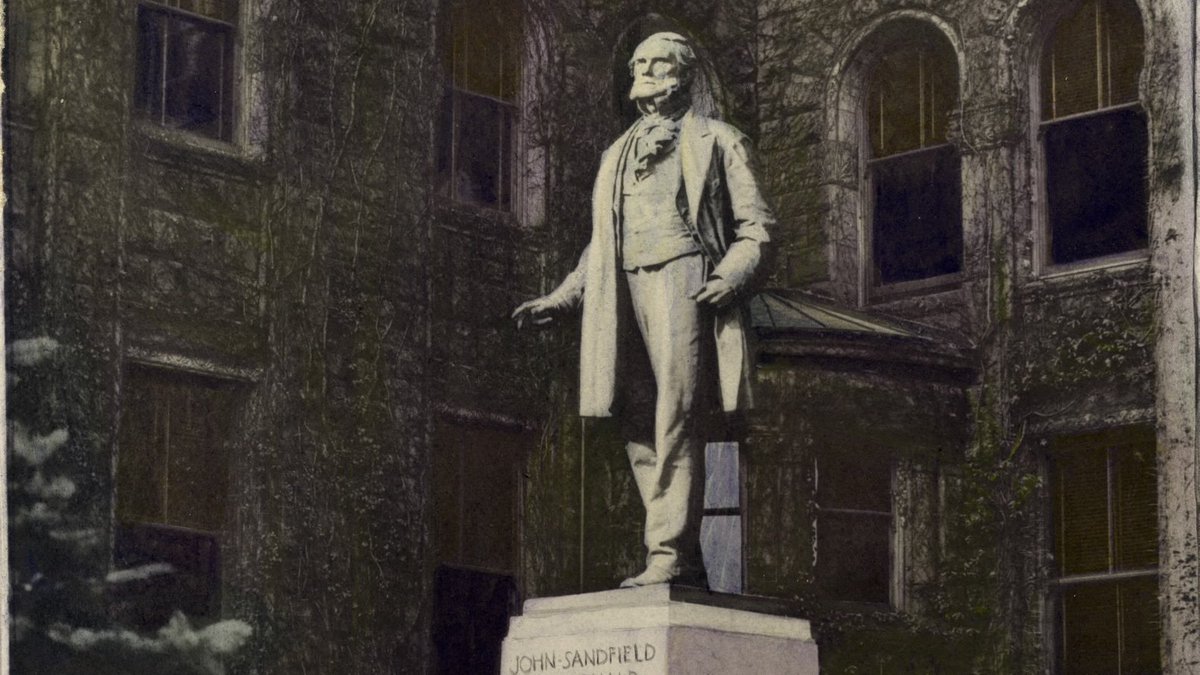
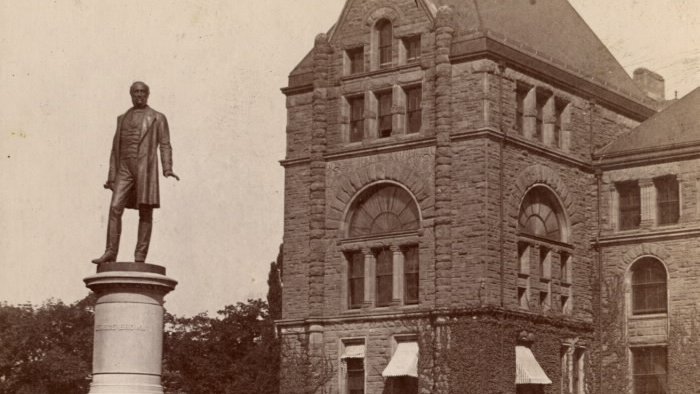

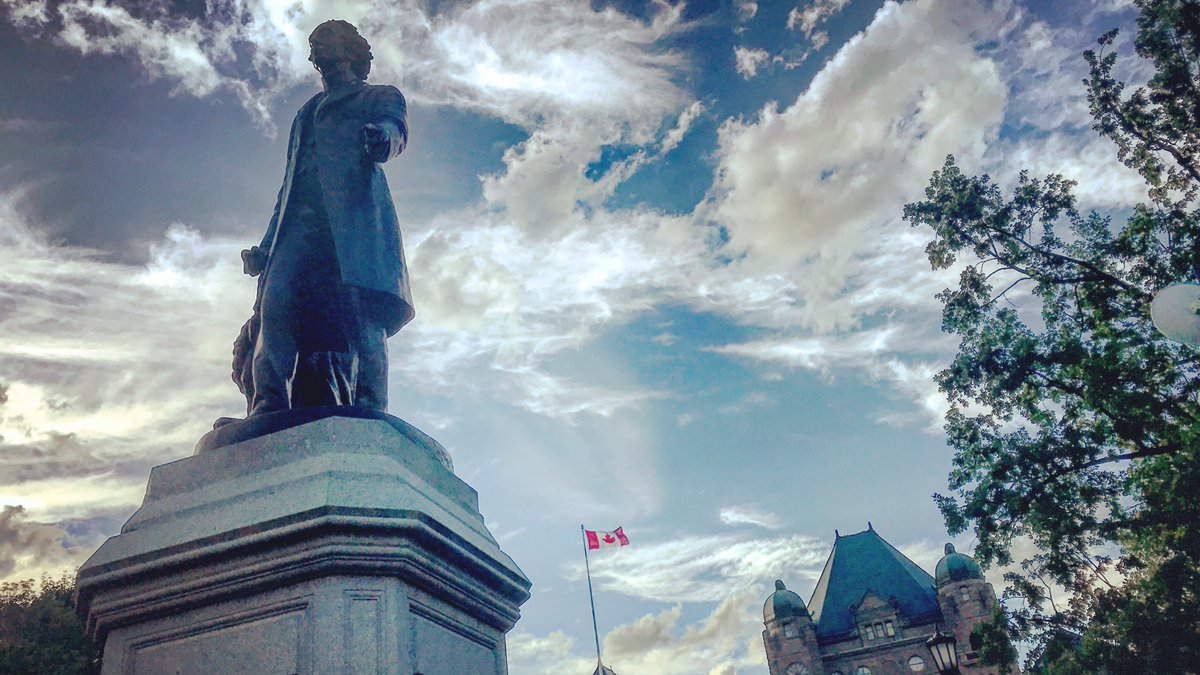
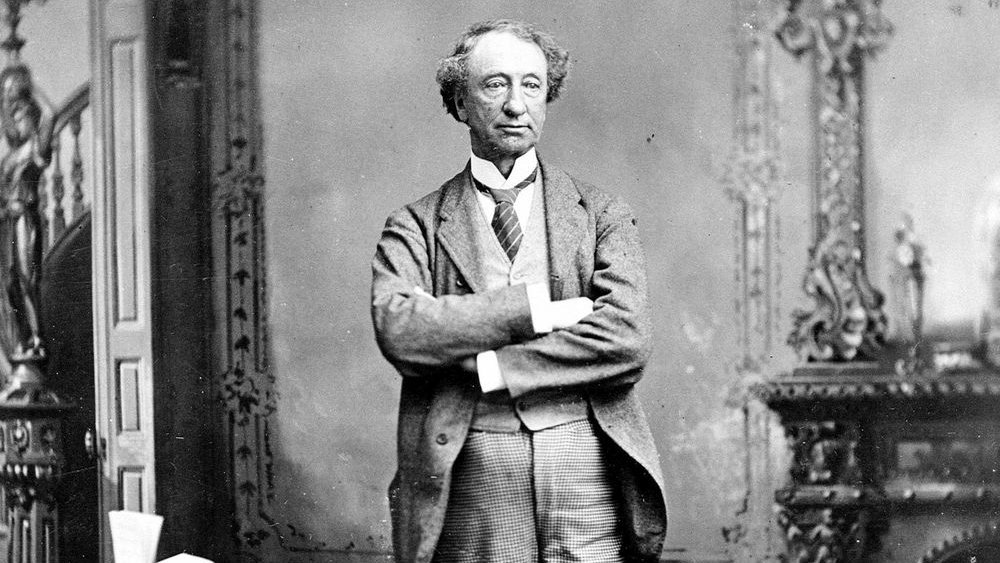
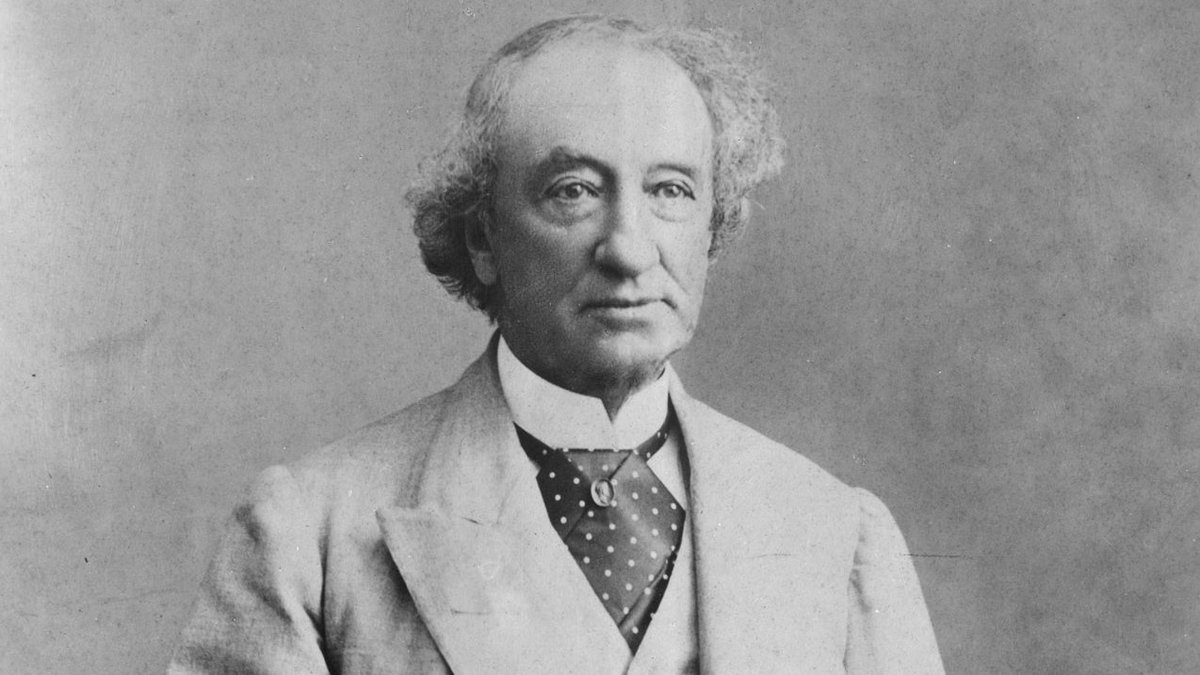
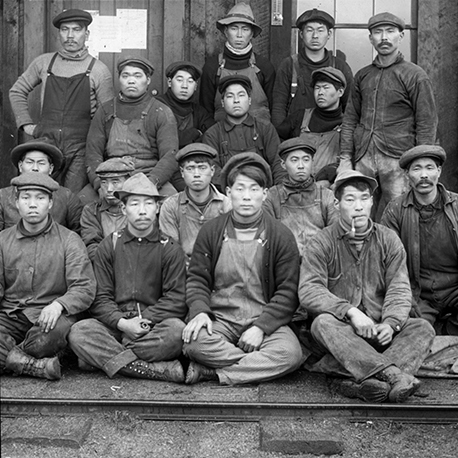

![10. “Chinese immorality [and] eccentricities … are abhorrent to the Aryan race and Aryan principles," Macdonald claimed.If Canada continued to let Chinese immigrants vote, “the Aryan character of the future of British America should be destroyed.” 10. “Chinese immorality [and] eccentricities … are abhorrent to the Aryan race and Aryan principles," Macdonald claimed.If Canada continued to let Chinese immigrants vote, “the Aryan character of the future of British America should be destroyed.”](https://pbs.twimg.com/media/EcB_wDbXQAAtV-s.jpg)
